Abstract
The growing intensiveness of market competition creates a new marketing challenge for sports brands. The leaders of the global sportswear market seek new ways to conquer the hearts and minds of the new and existing customers. The emergence of new media forms provides unique marketing opportunities. Mobile advertising has already become an indispensable component of sophisticated marketing strategies for sports brands. In recent times, mobile technology has evolved the traditional business practices, and this is the medium that sports brands look like a complete and cheap solution for catering to their marketing needs. Using this technology seems to be a viable option as this medium of advertising is gaining popularity all over the globe.
For advertising through mobile devices, companies base their marketing strategies on different models and mechanisms depending upon the nature, frequency, and nature of the advertisements. The present study has focused upon the mobile marketing strategies followed by sports brands including Nike and Adidas. The study involves primary research through interviews to acquire individuals’ views and responses from two countries – the UK and Saudi Arabia. The findings suggest that consumers residing in the UK perceived messages via mobile advertisements more positively as compared to consumers in Saudi Arabia. Different factors have been identified for this finding. Also, both Nike and Adidas have been successfully using mobile marketing to affect consumer intentions, attitude, and buying behavior however the findings do not suggest which company is better performing.
Introduction
Background
The growing intensiveness of market competition creates a new marketing challenge for sports brands. The leaders of the global sportswear market seek new ways to conquer the hearts and minds of the new and existing customers. The emergence of new media forms provides unique marketing opportunities. Mobile advertising has already become an indispensable component of sophisticated marketing strategies for sports brands. Different companies hold different views on what mobile advertising is and how it works. Reyck and Degraeve (2003) suggest that mobile advertising is essential “advertising via mobile phones”. Adidas is one of the pioneers of mobile advertising in the sportswear business. Sports brands like Adidas are among the key contributors to the rapid development of mobile advertising. However, not all sports brands readily recognize the usefulness of the advertising media. Therefore, it is essential that the benefits of using mobile advertising in sports branding and marketing be understood and applied across a variety of sports marketing solutions.
The hike in competition among top sports brands that started since the Soccer World Cup 2010 has resulted in the emergence of different more effective marketing mediums for highlighting their products prominently on the consumers’ preference list (Schwartz 2010). The intense competition also resulted in huge mergers of sports goods giants, such as the merger of Adidas and Reebok, which jolted the whole market including Nike, who was considered to be the closest competitor to Adidas. Although both these giant rivals have their share of the market safe, these companies are engaging in aggressive marketing activities that aim on attracting the customer base of each other (Adidas Backpack 2011).
In recent times, mobile technology has evolved the traditional business practices, and this is the medium that sports brands look like a complete and cheap solution for catering to their marketing needs. Using this technology seems to be a viable option as this medium of advertising is gaining popularity all over the globe. Companies like Unilever Brothers, Louis Vuitton, Marks and Spencer, and many others are using this medium effectively. Major reasons for this medium for marketing to become increasingly popular are its reach to the mass population and the cheaper costs that a company incurs for using this medium (Murphy 2010; Butcher 2009; Mobile Marketer 2010). It is expected that mobile advertising will gain more strength in the future and the medium will then be considered more influential as compared to TV advertising, and the spending of companies on mobile advertising will exceed TV and other mediums of advertisements (Div 2010). This mainly due to the reason that this medium of advertisement is cost-effective, where the marketers do not have to bear heavy costs of acquiring services of advertisement agencies, models, celebrities, and icons (Hanbo 2008).
For advertising through mobile devices, companies base their marketing strategies on different models and mechanisms depending upon the nature, frequency, and nature of the advertisements. These models are designed by marketing professionals and the advertising agencies, who decide as to how they want the system to work for making it more effective and according to consumer’s behavior towards the trends practiced by a large number of marketers (Harjeet 2011).
Scholars and researchers also attempted to identify the types and models that sports brands adopt to penetrate their target markets through the use of mobile advertisement. Pousttchi and Wiedmann and George (2007), explained six basic types of mobile advertisement messages that can be used to influence customers positively. They conducted extensive research of mobile marketing messages sent to the customers by different brands and categorized these messages into six categories. For this reason, they acquired the brand’s permission to analyze the marketing messages thoroughly.
These advertisements can be used by sports brands to build the image of the brand in consumers’ minds, to inform customers about offers and discounts, to deliver marketing teasers, to provide information about a product or groups of products, and to respond to customers’ queries. Another reason can be to understand consumer demands and suggestions through mobile polls and competitions. The conceptual models, on which sports brands base their mobile marketing mechanism are designed keeping in view the customers’ acceptance level towards the ad and different success factors, which are derived from detailed studies on the impact of mobile advertisement on consumers’ attitude and behavior. Key Pousttchi and Wiedmann (2007) suggested four further models of mobile advertising depending upon the acceptance that is acquired by the sports brand from the customers, namely one-off push model, one-off pull model, continued dialogue, and fundraising. These models are explained as follows:
- First model in which the marketer continuously alerts the customer about its offerings and promotions after acquiring permission from the receivers. Here the data protection legislations are incorporated where the data houses provide customer’s data after taking prior approval from the customers through different online surveys.
- The second model refers to a relatively cautious marketing campaign where the marketer communicates the promotions with the receiver, after acquiring permission on every occasion.
- Continued dialogue is a mobile advertisement model in which the sender and receiver of mobile advertisement communicate with each other continually and it’s more like a chat between the marketer of promotions and offerings and the customer. The customer asks queries to the marketer and the marketer replies accordingly.
- The last model, fundraising refers to a mobile advertisement medium in which the marketers ask customers for donations and charities by simply replying with certain alphabets and numbers to the messages that marketers send.
The expected positive response from the consumers’ side has caused further efforts to bring more development in this medium by companies who are utilizing this source of marketing. Many companies, who are depending wholly on mobile advertising have reported an increase in their profits. Nielsen’s (2009) study on the impacts of mobile advertising on consumer behavior revealed that consumer groups have shown the potential to widely accept mobile advertisements and continue to reflect promising behavior by making purchasing decisions after receiving advertisements on their mobile devices. As far as sports brands are concerned, they are seeing this new medium as a chance to penetrate those segments of the market that are not being tapped before.
We can take the example of Adidas who is considered to be one of the pioneers of the industry. Adidas initially faced continuous ignorance of their mobile advertisements from consumers until the company used more efficient and more effective mobile advertisements to attract the target market. The problem with Adidas’ mobile marketing messages what that they were either taken as spam or they were not enough attractive to catch customer’s eye. For making the impact of mobile advertisement, the company had to restructure its marketing strategies to meet the requirements and trends of the increasing market size. Nike followed Adidas and implemented the same marketing strategy with slight differences and achieves success. As of 2010, Nike holds around 34% of the market share and is considered to be the market leader (Schwartz 2010). The closest competitor is Adidas who managed to hold the second-largest market shares following the largest market shareholder, Reebok.
Mobile advertisement’s effectiveness heavily depends upon the mobile penetration rate in the markets where companies have adopted this medium. In Saudi Arabia only, by 2009, the mobile penetration rate was standing at 77% (Kippreport 2010) whereas, in the United Kingdom, mobile penetration rate exceeded the 100% mark by the year 2009 as it was estimated that every citizen beside adolescents owns a mobile phone. Currently, it is standing at 126% and expected to rise by another 25% to reach 151% by 2012 (Telecoms Market Research 2008).
Another factor that plays an important role in the success of mobile marketing campaigns is the permission of customers that must be acquired before sending them marketing messages. This is a vital factor, as the companies acquire customers’ databases from data warehouses and management companies. The private data that these databases contain, related to customers, if leaked to those who might use it for wrong purposes, will put brands’ image in jeopardy and will result in their mobile marketing strategy’s failure. For this reason, a marketer is supposed to acquire permission from the customers either they want to receive mobile ads or not to ensure that the mobile medium of marketing has been utilized properly and has targeted the right customer at the right time, in the consumer market (Jayawardhena et al. 2011). This acquisition of permission is compulsory for the success of mobile marketing and the laws in the UK and Saudi Arabia also demand the companies acquire customer’s permission.
The Data Protection legislation passed in both countries in particular and worldwide in general demands the organizations to protect the right of customer’s privacy and avoid leakage of precious market data (Bayazidt 2010; Air2Web 2003). In the past, some cases revealed that the leakage of a firm’s customer database caused it to lose a huge portion of its customer base and the remaining customers became conscious about how the companies use their personal information. For example, T-Mobile lost its entire customer data due to a mistake committed by one of its employees in 2009. Due to this leakage of data, customers faced severe problems like hacking of their emails and their correspondence with T-Mobile (McNamara 2009). The studies like one conducted by Pousttchi and Wiedmann on the impact of mobile advertisement on consumers’ attitude revealed that most of the customers are willing to receive mobile advertisements as they are informative and put a positive impact on their spending against receiving advertisements on their mobile phones. Pousttchi and Wiedmann utilized 55 case studies of organizations involved in mobile marketing and out of these 55 studies, analyzed 30 cases in detail. To test the reliability of these case studies, both researchers interviewed 44 mobile marketing experts in Europe.
The main problem with this dissertation lies in gathering statistics and data related to the impact of mobile advertisement on consumers’ attitude towards marketing brands in Saudi Arabia, due to the reason that not much work has been done by researchers to study the impact and its effectiveness on the Middle-Eastern nation. For this reason, it would be interesting to study what researcher’s findings are to provide valuable information to the readers regarding the mobile penetration in Saudi Arabia, the use of mobile advertising by brands in the kingdom, and the impact of mobile advertising on consumers’ buying behavior and perception regarding those brands.
This study aims to study the implication of mobile advertisement by different sports brands, particularly Adidas and Nike, to their marketing efforts to promote and highlight their products in the consumer market. The focus throughout this study lies on how effective this new technology is in attracting a customer base of competitors in the sports goods manufacturing industry. The emphasis has been put majorly on Adidas and Nike due to the reason that both these companies are considered to be the first movers towards mobile marketing and have reserved impressive record in creating a brand image and attracting more customers through the use of mobile marketing. This study is an interesting piece of work as it opens new doors of information for the readers as in past; no significant work has been done by researchers in Saudi Arabia and the United Kingdom, the location where the research work has been carried out, to understand this effective and cheaper medium of marketing (Christine.net 2007).
Research Objectives
This research explores the issue of mobile advertising and its implications for sports brands. The dissertation covers the ways mobile advertising is (and can be) used by the two sportswear manufacturing companies, Adidas and Nike. This study aims to explore the use of mobile advertising by Adidas and Nike in Saudi Arabia and the U.K. The research seeks to compare and contrast mobile advertising strategies by Nike and Adidas in Saudi Arabia and the United States. The basic issue under research is whether and how mobile advertising can serve as a success factor for large companies and brands in the sportswear manufacturing industry. The dissertation analyses the issues of mobile advertising beyond the sportswear manufacturing industry. No predictions as to the future of mobile advertising in the global markets are made in the study. The research questions are limited to exploring the contribution of Adidas to mobile advertising and its strategic implications for Nike. The principal objectives of the research include
- To define mobile advertising
- To describe the effects of mobile advertising on sports brands;
- To examine the effects of mobile advertising on Adidas and Nike in Saudi Arabia and the U.K.;
- To estimate the use of mobile advertising by Nike and Adidas in Saudi Arabia and the U.K.;
- To assess Nike’s current marketing strategy in Saudi Arabia and the U.K.
Project Aim
This study aims to provide an understanding of mobile advertisement and its adaptation by sports brands to influence consumer behavior in the UK and Saudi Arabia. For this reason, Adidas and Nike have been selected as prime sports brands, as they are utilizing this medium of marketing for promoting their offers and products. The degree of effectiveness of mobile marketing channels has been analyzed based on their adaptability by the sports brands, and their tendency to attract masses towards showing a positive attitude to these brands. For this reason, several authentic theories and literature has been critically reviewed to get an idea of how mobile marketing works and what are the factors that sports brands involved in mobile marketing should keep in focus while designing their ads. The literature review chapter also includes the work of previous researchers who have studied the same subject with little variations. The efforts of the researcher in the first three chapters assist him to formulate the conclusion and findings to support the research questions designed in the later chapter of this study.
Research Questions
Keeping in view the objectives and aims of this study, the following research questions are designed by the researcher to reach a valid conclusion to this research work:
- What is the impact of mobile advertising on consumer behavior and how effective it has been? What is the impact of mobile marketing on consumer’s behavior towards sports brands in Saudi Arabia and the UK?
- What is the impact of adopting mobile marketing channels on the performance of Adidas and Nike?
- Are there any significant changes in Nike’s and Adidas’ marketing strategy due to the adaptation of mobile marketing channels?
Significance of the Study
Given the novelty of mobile advertising and its role in marketing sports brands, little or no research is performed in the past to explain the theoretical underpinnings of global mobile advertising. Therefore, this dissertation contributes to a better understanding of mobile advertising, its effects on sports brand position and popularity, and its applicability in various strategic and marketing settings, especially in Saudi Arabia and the UK. In the absence of strong theoretical grounds, this research study utilizes the principles of statistical research. The benefits of the model for marketing research are difficult to underestimate. First, the model is equally comprehensive and complex (Franses and Paap 2001). Second, it includes only relationships that facilitate the understanding of the mobile advertising phenomenon (Johnson 1998). Third, it reduces the risks of error (Schmidt And Hollensen, 2006). The statistical model is measurable, relevant, reliable, and easy to duplicate (Craig and Douglas 2005; Kolb 2008). It supports the development of logical relations between Adidas’s marketing solutions and its mobile advertising resources (Franzen 1999). It also helps to identify their applicability in the context of Nike’s marketing strategies and their success.
Ethical Considerations
It is the primary responsibility of the researcher to acquire prior approval of the project supervisor, before carrying out any research work. The interview questions designed to obtain primary data are designed in the light of the supervisor’s instructions and have been proofread by the supervisor before implementation. The supervisor has assisted in the analysis of the data retrieved from secondary and primary sources, and the findings are formulated with the consent of the supervisor. Keeping in mind the considerations and ethical guidelines provided by the university and the states in which the interviews are conducted, the researcher has acquired prior acceptance from the concerned authorities. Special measures are taken to safeguard the privacy of the information that the respondents have provided and not shared with anyone except the supervisor. Avoiding similarity level and plagiarism throughout the research work has been paid special attention and any help from a third party or outsourcing any part of this study is avoided. Authors of publically available information, that the researcher utilizes as secondary information, are provided due credit. It is the right of the researcher that anyone who uses this study for referencing or any other academic purpose without the approval of the researcher or his supervisor, they can take suitable actions against those personals. In the end, it is to be notified that any ethical issue that might be pointed out by readers should be because of human error.
Literature Review
Introduction
This literature review focuses on presenting an in-depth analysis of the trends and growth in the marketing of sports brands through mobile advertisements that have emerged as an effective tool for promotional activities across different industries worldwide. In this literature review, facts, and figures related to mobile marketing are presented, supported by the theories that previous researchers and scholars have formulated. The literature review also aims to create an understanding of the nature of the present study and expected outcomes from the study when it is completed. It is attempted that the literature chosen for review is selected from authentic and reliable sources using different academic databases and online sources based on the criteria identified in the next chapter of this report.
Mobile Advertising
Tsang et al. (2004) define mobile advertising as a part of M-commerce, which allows businesses to promote their activities and products by advertising them on mobile devices held by consumers. The authors identified various factors that they considered responsible for the increasing popularity of this channel of advertising. The increasing use of cellular services has led consumers not only to buy a large number of mobile phones and other cellular devices but also increase the use of mobile services available to them. In particular, the introduction of short messaging services (SMS) has drastically changed the way communication is made, and realizing this fact organisations are also making use of this mobile technology to communicate with their customers (Tryhorn 2009). Nowadays, organizations are designing applications and add-on extensions to enable customers to receive offers and shop through their mobile devices instead of traveling to the physical shop location. The innovative technological changes in the mobile phone industry have also brought a revolution in the marketing industry worldwide in which mobile devices have become one of the most effective medium for one-to-one marketing (Tsang et al. 2004).
Prenzel (2009) suggests mobile advertising has allowed companies to increase their market coverage and approach a much larger customer base that has certainly affected positively their earnings. This is the reason that organizations across the globe are now launching two billion mobile ads each year which certainly have significant implications on shaping up consumer behavior.
Haghirian et al. (2008) in their study emphasized the escalating usage of mobile devices to advertise products by organizations. According to them, mobile advertisement has been recognized by organizations as a way of creating more value for their business and products/services amongst consumers. This medium has paved a way to directly communicate with customers, eliminating the time constraints and location barriers. The mobile advertisement has provided several ways for these organizations to create awareness among the targeted populations. This study also provides in-depth details of how mobile marketing is effective in different markets cultural setups, but the study does not provide sufficient information on how mobile marketing works and how organizations can achieve desired results from carrying it out. A problem that most organizations counter with using mobile marketing is that the impression and impact of these advertisements do not last long as compared to other marketing forms such as those through print and other electronic mediums (Schwartz 2009).
Mobile marketing in the UK
Consumers in the UK have shown passive behavior towards mobile marketing mainly due to the privacy issues, to which UK’s customer base is very sensitive. Although, the results that organizations involved in mobile marketing have achieved reflect a bright future of this medium of marketing in the country. The Mobile Marketing Association of the UK has predicted in 2010 that the spending by businesses on mobile marketing of their products will rise to 124% by the end of 2011 (Brill 2011). As the number of smartphones is also increasing in the UK with 50% of mobile users in the country having smartphones, the scope of mobile marketing is also expanding rapidly. This is because smartphones provide more interactive options and support media which allow mobile marketers to present their products/services to customers in a highly creative and interactive way. The use of social network sites by mobile marketers for the promotion of products/services have also been observed as one of the growing aspects of mobile marketing in the UK which is leading to greater levels of acceptability amongst mobile users of the marketing tactics used by companies (Spotlight Ideas 2010).
Mobile Marketing in Saudi Arabia
Saudi Arabia has been a lucrative market for mobile operators, being the second-largest telecom market in the Middle East. Mobile marketing is a new phenomenon in Saudi Arabia, and marketers still find it difficult to successfully influence customers through this medium. This is because of the strict Sharia laws and the societal structure of the kingdom, which does not allow many especially women to make use of such technological products that may expose them. But still, mobile marketing has been comparatively successful in the Saudi market as compared to other Middle Eastern markets. The economic growth of the Middle East in recent years has increased general awareness of individuals of their buying rights, and this is the reason that they are now demanding and requiring more information related to the product they purchasing and mobile marketing offers one of the less costly and convenient methods for organizations. It is estimated that the acceptance of mobile advertisement by Saudi customers will rise to 37% by the end of the year 2011 as compared to 23% in 2010 (Bayazidt 2010).
Theoretical Framework
For a clear understanding of consumer behavior and the impact of mobile advertising t, this section highlights different theories and their relevance to the research subject that is to investigate buying behavior and trends towards the purchase of sports goods.
Theory of Planned Behaviour
Ajzen (1991) redefines the theory of planned behavior by stating that this theory helps in identifying the relationship between customers’ intentions and attitudes towards a product, subjective norms, and perceived behavioral control. This implies that this theory overviews the intentions of an individual related to the particular behavior that they reflect (Ajzen 1991). In light of the present study, the theory can help in presenting a prediction regarding the behavior of the consumers. As for the present study, it implies that the greater an individual’s behavioral inclination towards receiving the mobile advertisements, the greater the probability that the individual will make purchasing decisions or make an inquiry about the product that has been marketed through a mobile marketing channel. It is evident that the subjective norms of individuals are positively influenced and the behavioral inclination of individuals feel in the favour of availing the offers they get through mobile advertising. In this manner, it can be said that the theory of planned behavior relevant to mobile context as it helps to understand the degree of acceptability to the mobile marketing messages and the attitude that consumers show towards the message (VanNorman 2011).
Multi-Attribute Model
Ajzen and Fishbein (1980) proposed a multi-attribute model which constitutes a complex and influential concept regarding the relationships between individuals’ believes their attitudes, intentions, and behaviour. With respect to mobile marketing, the multi-attribute model sbehaviorhaConcerning’ attitude to mobile advertisements depends on their evaluation of mobile advertisement. This reflects the fact that an individual’s positive attitude towards the mobile advertisement depends upon the nature of his or her belief which should also be positive and the individual should be willing to receive and respond positively to the advertisement. This also implies that attitudes of the consumers might fluctuate with a change in their evaluation of the mobile ad or a change in their belief which they have interlinked with their decisions regarding the product offered in these advertisements (Vatanparast 2010).
Communication Model
To make it easier for the readers to understand the whole process of mobile marketing, a communication model, proposed by David Berlo (1960) is presented here. Berlo extended the famous model of communication of Shannon and Weaver (1949) to make it more clear and understandable.
In his model, Berlo defined the whole process of communication presented by Shannon and Weaver that included 4 steps, i.e. source message, channel, and receiver. Berlo made amendments by identifying the attributes that each communication step should address. The source is identified as the sender of the communication message. The sender should have good communication skills so that the receiver shows interest in listening to what the sender is saying. Sender’s knowledge and attitude derive his intention to send a message which is deeply influenced by his or her cultural background. In the second phase, the intended message is designed keeping in mind the purpose, selection of language, and prioritizing the message, i.e. which message is important and should be communicated first. In the third phase, the most important part of the communication process is identified; this is the channel or medium of communicating. The completion of the communication process heavily depends upon the type and efficiency of communication channels. In the last stage, the receiver receives the message, and again, it depends upon the receiver’s perception, his societal traits, knowledge, and attitude, that what meaning he or she derives from the communicated message.
The mobile marketing system works in the same manner as Berlo’s communication model does. The sender, a consumer brand, for example, designs the promotion message keeping in view the culture, knowledge, attitude, and society of the receiver. Then a proper channel of marketing, i.e. mobile devices or software, is selected to approach the target audience by sending them the marketing message on their mobile devices. At this point, the receiver’s attitude, knowledge, and social background play a vital role in the success of the marketing message. If the audiences’ attitude is in favor of the sender, the marketing communication is said to be achieving its desired results.
Berlo’s classic communication model helps the marketers to understand the importance of understanding target audiences’ attitude and their societal background. It also provides marketers with the necessary information regarding the selection of efficient mobile marketing medium and proficient designing of the marketing message.
Conceptual Framework
Mobile Advertising Model
Shannon and Weaver (1949) in their communication model provided an insight into the technicalities of the communication process which involves taking communication message from the sender to the recipient. Shannon and Weaver designed this model keeping in view the requirement for the efficient communication process between the sender and the receiver. Shannon and Weaver also identified factors that distort the communication process and referred to them as Noise. In the present study, this model has been adopted to present the process of getting a marketing message from the senders’ end to the receiver’s end in a mobile marketing setup which is also discussed. This is represented in the following figure.
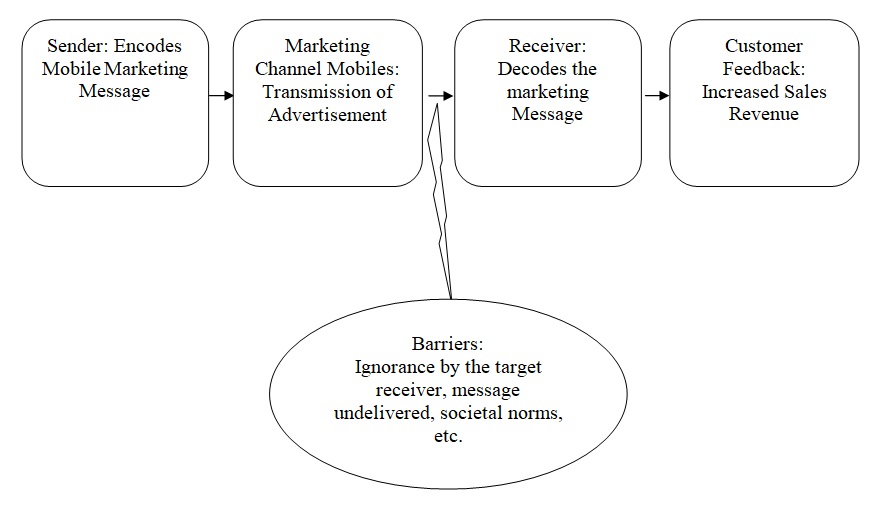
The above diagram shows the processes that are involved in delivering marketing messages successfully to mobile users. To define this system, the parties involved should be defined first. The first party is the advertiser himself who intends to create a mobile marketing message. The advertiser creates the campaign to be marketed upon completing its profile like the targets and the territory to be covered for making this advertisement campaign successful. The first stage of the process can be considered to be the most crucial because this is the point where coverage is assessed. After the message is designed by the advertiser, it is handed over to the mobile networks where the transmission is monitored and the level of response it is getting from mobile users is analyzed. At this point in the process, it is important to carry out compatibility tests to assess whether the mobile devices can receive the message properly. This is the core responsibility of the network to send the message in a form that the marketer wants it to be, to ensure that the target mobile users clearly understand the message and what the marketer is trying to communicate to them.
Similar models, either in a modified form or the complete adaptation, are implemented to the communication mechanisms all over the world. Organizations use Shannon and Weaver’s model to design their organizational communication networks inside and outside. Similarly, mobile marketing messages are designed keeping in view this classic and basic model of communication. Especial consideration is provided towards avoiding distortion in market communication. These distorting forces can be those elements that hack mobile phones or steal precious data of customers.
The system of mobile advertisements is expected to deliver services to consumers following high-quality standards and serving consumers with convenience. In mobile advertising, if the customer decides to shop the product from his mobile, there are several secure and convenient payment models available. One way of doing this is through a credit card over the internet access via mobile device once the customer has selected and decided to purchase a product. Online purchasing is considered to be facilitating mobile marketing as it allows individuals to go ahead with the purchase through their mobile phones instead of traveling to the physical store (Prebynski 2010). The information provided and level of security of payment through such online systems positively impact consumers’ behavior as individuals can acquire a better image and understanding of the company and its products. After all, the success of this system depends upon the perception that it builds amongst consumers, and the feedback that consumers provide. There are cases of mobile marketing failures, where the organization had to face huge revenue losses and its customers also found themselves in jeopardy due to leakage of private information or valuable data or the decline in the quality of content sent to the customers. The best example of such problematic mobile marketing is that of Dunkin Donut which tells customers to send a message on the provided number to access offers made by the company but in return, the customers are taken to the content which is slow and low in quality (Mclvor 2011).
It should be kept in mind that the medium used plays an important role in the success of a mobile advertisement. Mobile terminal systems depend heavily upon the content of the message that is being sent via the devices. The information must be relayed to the mobile user with clarity and it should be able to create more value for the products of the organization. It should be complete and concise, in the sense that it should contain all the required information and the promotional message that is to be delivered. Therefore, it can be suggested that the success of a marketing campaign depends on the completeness of the message because it is the only way that an organization connects itself with the customers on a one-to-one basis. If the message is incomplete and distorted, consumers will ignore it and delete it from their mobile devices (Goggin 2011). As the focus of this dissertation is on mobile advertising through cell phones, smartphones, and PDAs, this study can be seen as restricted to handheld devices. Tien et. al. (2010) discussed proposed a statistical approach that increases the utilization of mobile call data. During the study, Tien et. al found that handheld devices have become an integral part of individuals’ lives and it is estimated that a person accesses his or her handset 90% of his time in a day on average (Tian, et al. 2010). These findings imply that the use of mobile marketing can increase manifolds in years to come as more organizations recognize its importance.
Consumer Buying Behaviour Model
To understand the concept, a consumer model has been followed which was suggested by Cohen (1991) and its different dimensions have been addressed with slight modifications, keeping in view the requirements of the present study.
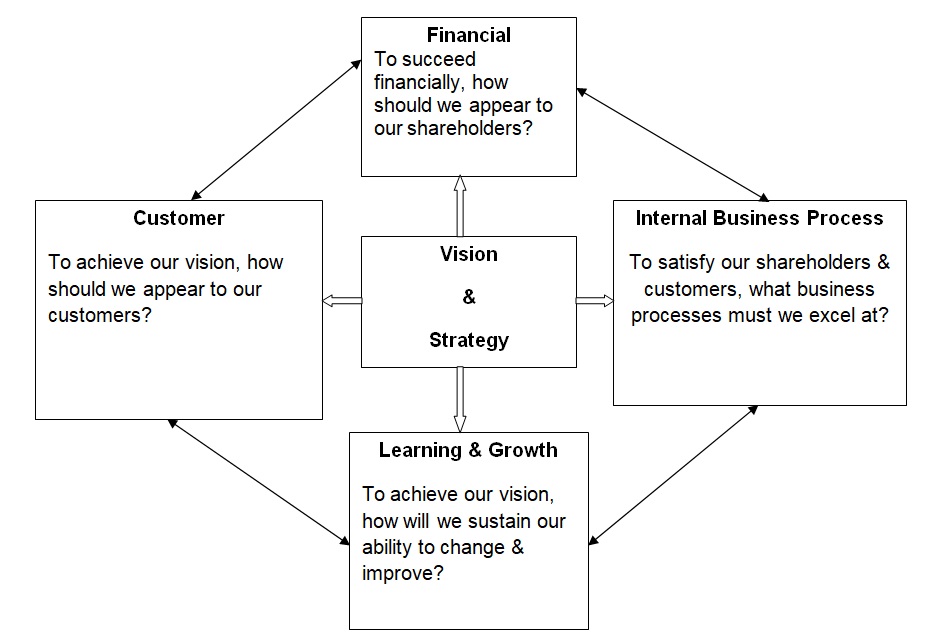
With the emergence of mobile devices and speedy networks as an effective tool for promoting products, the worldwide advertisement industry has invested heavily in using this medium of advertising effectively and enabled the business to communicate with their target markets incurring cheap costs and putting a favorable impact on the consumers (Kim, 2010). The theory of Cognitive Dissonance proposed by Festinger (1957) is helpful to understand the impact of mobile advertising on consumers’ attitudes towards the advertiser and the products and offers he communicated through mobile advertisement. Festinger suggested that an inconsistency between opinions, attitudes, and expectations of a consumer might result in raising the feeling of discomfort within consumers’ minds. Consumers are highly aware of the products about which they receive mobile advertisements frequently. In this manner, these consumers hold a stable and consistent attitude towards the mobile advertisement. The impact of social norms, trends and the perceived utility in this manner keeping in view the Festinger’s theory, can be said to be flexible and easily adjustable because consumers’ attitude is relatively less resisting towards mobile advertising than the attitude towards general advertising mediums (Bauer, et al. 2005).
Theory of reasoned actions, Fishbein and Ajzen (1970), helps to understand the impact of mobile advertisement on consumers’ intention and buying behavior. This theory suggests that an individual’s intention towards offerings deeply influences his or her behavior. To derive consumers’ intention towards acceptance of mobile advertisement, marketers have to add content and interactive media to facilitate the offers and products that are marketed through mobile marketing channels (Keshtgary and Khajehpour 2011). Lee (2005) discussed the importance of interactivity in the success of mobile advertisement, as a medium to increase the acceptance level of the target market. He wrote that the increased level of quality communication with the consumers, about their products and offers, has also increased sports’ brand’s acceptance by the target consumers. Mobile marketing has added value to their products and brand perception by simply communicating to consumers how they can get the maximum benefit of the products they offer and still, there is more room to improve advertising through this medium. The level of involvement and sports followership also become an integral part of the process, which includes successfully deriving consumers’ intention and behavior in the favor of marketers (Lee 2005).
The mobile advertisement has become such a lucrative opportunity to attract the masses that it has caught the attention of sports brands all around the world. In 2010, different regions of the world reported that the organization spent 1,627.1 million dollars on a mobile advertisement, and in 2011, the spending so far is 3,309.9 million dollars. This spending is expected to reach 20,610 million dollars by the end of 2015 (Mobithinking, 2011). Adidas is considered to be the pioneer of mobile advertisement in the sports goods manufacturing industry. Adidas used this medium to promote its vintage clothing, retro shoes, and urban wear with the help of mobile promoters Isobar and Ad Mob (Butcher 2009).
Aktas (2010) also discussed the success of mobile devices as a medium of marketing, used by several organizations. The author says that the revolution in the online world, with the introduction of the mobile advertising industry in the marketing channels, has open new doors for consumers to find the product that fulfill their need and the organizations to create massive awareness about their products among the target audience. This medium is gaining strength because it is more appealing and convenient for consumers. To cater to this rise of mobile marketing, marketers are now trying to bring possible improvements to get succeed in this technologically driven market environment.
According to Hsu and Chang (2003), the use of mobile advertisement has provided room to organizations for attracting the customers of other organizations. In this way, the organizations experience massive brand switching in the target market. Young people are the strongest link in this medium and they can be easily attracted as compare to adults. This implies that the young generation finds the mobile medium of advertisement more attractive as compared to other mediums and it appeals to them to positively make purchasing decisions. Another reason for the younger generation being a more attractive segment as compared to other segments is that they use mobile devices more frequently as compared to adults (Hsu and Chang 2003).
Okazaki (2005) stated in his study on mobile advertisement adaptation by multinationals across the globe that this medium of advertising has created an environment where the companies are more closely in the communication process with their consumers. These organizations collect a huge amount of data and information to circulate the messages to the audience. Adidas and Nike have utilized this medium with their best potential and have benefited by improving their direct communication with their target audience. They focus on designing their promotional message in such a way that should be able to derive the purchasing behavior of consumers in their favor. An organization should be very careful while designing its marketing message because it either creates a positive image of the product in consumers’ minds or it might create a devastating image of the product in consumers’ minds. With this, this can be said that the success of a mobile advertisement depends heavily upon the perception of the consumer towards the message (Okazaki 2005).
Jordan McCollum (2007) discussed research on mobile advertising by a European research firm, Vanson Bourne. In the research, Vanson Bourne found that the global sports brands are willing to spend 10% of their marketing expenses on mobile advertising through SMS and interactive in addition to 28% of global brands undergoing a developmental period to spend a significant portion of their marketing expenses on mobile advertisement. It was also revealed in the research that 58% of these brands will extend the mobile marketing expenses to 12% by 2012. The report also stated that 75% of these organizations expect that 10% of the target consumers of these marketing messages will make purchase decisions in the favor of the company, after receiving these messages. Also, another 10% of target recipients are expected to reply to these messages to gather more information or for a product sample. Also, there were concerns raised by respondents to this study. 46% of marketers thought that spending on mobile marketing is risky, due to the reason that the customers might think of it as SPAM. McCollum also quoted a study conducted by “eMarketer”, in which it was said that the global spending on mobile marketing will raise to $ 3.5 billion by 2011 as compared to $ 123 million in 2006 (McCollum 2007).
Issues and Challenges in Mobile Advertising
Patrick Barwise and Colin Strong (2001) discussed one issue that concerns a lot to the mobile advertising senders. In their article, they stated that it is necessary to acquire the permission of the receiver for the sake of delivering marketing messages on their mobile devices. They pressed on the need of conducting more studies on permission-based advertising through mobile phones. Mobile advertising, especially in the UK has resulted in huge returns. The most attractive segment to deliver the marketing message is young adults. The author said that with planning and execution in the right direction, this channel for marketing is gaining strength and has shown potential to benefit both sender and the receiver of the marketing messages (Barwise and Strong 2001).
Summary
The literature review presented by the researcher in this chapter assists in the analysis of the findings of the current study based on the conceptual framework derived above. The researcher makes extensive use of theories and literature, publically available, to determine the effectiveness of mobile marketing by sports brands for influencing consumers’ behavior. Several dimensions have been identified that urge the consumers to reflect a positive attitude towards sports brands after receiving marketing messages on their mobile devices. Besides, several barriers that prevent customers to act positively against marketing messages are also presented.
Methodology
Introduction
Selecting an appropriate research methodology holds a key role in carrying out a research study because it leads the researcher in the desired direction. Before adopting a methodology, a researcher needs to understand all the types of research methodologies and then selecting one that suits most given the nature and aim of the study. This chapter presents the methods applied to the present study for gathering and analyzing the information and data gathered for the research. The use of different tools and sources of data are also underlined in this chapter. The approach opted for analysis of primary and secondary data gathered to formulate a logical conclusion to the study are also discussed along with the proper reasons and limitations of the methodology adopted. In particular, the approach to selecting a sample and its members for carrying out the research is also discussed. By the end, the reader will also be able to understand the possible limitations of this study.
Adopted Methodology
The present study makes use of a quantitative approach for collecting responses from respondents and analyzing these responses via statistical means. Methodology holds an important place in any research study as it helps the research to design the map of the activities by providing clear guidelines and principles for the researcher to follow. The methodology also ensures the validity of the findings of the research study. This study uses quantitative research methodology to meet the primary goals and targets of the study. The quantitative approach helps transform and presents the conclusive results by using the data available, which is interlinked with the measurements and implemented numeric data. The quantitative approach is based on numeric and statistical facts and figures and various statistical tools are used to assess the numeric data collected from research premises through different sources (Thomas 2003).
The nature of this study requires the implementation of quantitative methodologies because it is aimed at providing the extension of the existing literature and in presenting the new dimensions of the subject in discussion. The present study provides the reader with the different aspects of behavioral trends of the consumer market that have been discussed in the previous chapter of this report and are further investigated in light of the sports brands’ mobile marketing in the United Kingdom and Saudi Arabia. The major reason for adopting a quantitative approach is to utilize the similar theories and dimensions of the subject presented by past researchers, for example, Melody Tsang, Shu-Chun Ho, and Ting-Peng Liang (2004) who made use of interview guidelines to collect responses of individuals and then analyzing them using statistical means and methods such as correlation and regression to evaluate the relationship between variables identified based on consumer behavior model related to web advertising which was explored for analysis of the impact of mobile marketing on consumer choices. Although the quantitative approach is considered suitable for the present study, however, it is understood that the results obtained from research using a quantitative approach may only be relevant for specific research and would be difficult to utilize in generalized conditions. Moreover, due to the limited time frame and accessibility, it has not been able for the researcher to select a larger sample of students as discussed in the later section of this chapter which could restrict the outcome of the statistical testing and therefore, its use is considered to be limited.
Furthermore, the approach that is used for this study is the deductive approach moves with a generalized approach forward to a specific outcome. This approach requires careful examination of the theory underlying the research subject and identifying a specific relationship that the study needs to focus upon which in this study is the impact of mobile marketing on consumer behavior. This is evaluated based on the consumer behavior model suggested by Cohen (1991) which forms the ground for testing out reasons and factors affecting consumer behavior. The study then goes on collecting data which is analyzed to conclude the impact of mobile marketing on consumer behavior related to sports brands and their products.
Data Collection
The present study collects useful information and data about different aspects of mobile marketing and its impact on consumer behavior from both primary and secondary sources. These sources are discussed below:
Primary Research
Primary information is gathered via face-to-face interviews with students who are currently studying at the University of H, London, and King Saud University, Riyadh. The reason for selecting face to face interview for this study is because the researcher had the opportunity to travel to Saudi Arabia and it was convenient for her to interview students who are studying in the local university. Moreover, in comparison to the survey questionnaire conducting an interview seems more appropriate where a particular aspect of consumer behavior is studied, and also the response rate remains much higher compared to the random selection of respondents for survey interviews. Therefore, the interview provided a targeted selection of students based on the criteria defined in the later section of this chapter. Since the nature of the research is quantitative therefore the questions that have been designed by the researcher are mainly of closed-ended nature. Closed-ended questions allow the researcher to collect responses from a prescribed set of answers or choices from which interviewees.
The interviewer in this case the researcher herself had to read out options available to the questions and prepare interview transcripts. For the present study, an interview question set has been finalized after conducting a pilot study described in the following section of this chapter. The final set of interview questions comprises 21 questions out of which only two questions are open-ended and allows interviewees to provide answers in more detail. These open-ended questions include those aimed at what improvements interviewees may suggest making mobile marketing more effective by brands selected. This way the present study has dealt with the researcher subject more broadly by inquiring about the trends observed by individuals in mobile marketing and that by sports brands. The basic aim of the interview questions is to gather responses from students who have the experience and know-how of mobile marketing carried out by sports brands and if such marketing affects their buying decisions related to particular sports brands including Adidas and Nike.
Interviews were conducted in an uncontrolled environment separately in the UK and Saudi Arabia. The researcher conducted interviews in the UK from 1st July 2011 to 15th July 2011. Interviews in Saudi Arabia were conducted from 20th July 2011 to 3rd August 2011.
In particular, to these sports brands, the interview questions include certain statements that are based on the Likert Scale. The likert scale is used by the researcher to know the degree of agreeableness or disagreeableness of the respondents. This scale provides a specific level of agreement or disagreement with the statements provided by the interviewer to the respondents. Likert scale enables the researcher to overview the favorable or unfavorable attitude of the respondents regarding the research objective (McDaniel and Gates 1998). In the present study, it helps the researcher to conclude the favorable or unfavorable nature of the respondents towards the impact of mobile advertising on these respondents’ buying behavior towards sports goods.
Pilot Study
To evaluate the completeness and effectiveness of interview questions a pilot study was conducted by the researcher which involved the selection of 10 students from the university. The outcome of the pilot study was the change in the flow of interview questions and clarity of language that was used in the initial set of interview questions. Both versions of the interview questions are attached to this report as Appendices. This important exercise allowed the researcher to estimate the time required for completion of the interview which was also informed to selected interviewees. Moreover, this allowed the researcher to ask questions in a better tone and approach so that respondents can have a clear understanding of the questions and expected responses.
Target Respondents
Since the study involved a face-to-face interview with respondents therefore, it was important for the research to identify the respondents before emerging formally to the survey in order not to waste time and effort. The basic criteria for selecting interviewees were:
- the ownership of a mobile phone,
- individuals having an age of 18 and above,
- students studying at University of London, London and King Fahd University, Riyadh, and
- basic understanding of the mobile marketing which companies undertake from time to time.
Sample Selection Stages
Since, interviews were to be carried out in two countries that are the UK and Saudi Arabia to understand and differentiate between trends in mobile marketing and its impact on consumer buying behavior in two different markets, therefore, to reduce the time involved selection of interviewees was made randomly based on the list that the researcher had prepared of the names of friends/colleagues and individuals whose data had been obtained through personal contacts. The selection approach could therefore be suggested as non-random convenient sampling which is based on a non-probability approach. The reason for this type of sampling was the large population size of students and it was impossible to ensure sampling that is reflective of every segment of students that could have identified various determining factors. A total of 100 individuals were selected from both the UK and Saudi Arabia. Equal distribution was made to ensure that responses are sufficient to conclude both markets. The researcher has realized that the sample size may not be large enough for statistical testing of data collected but it was impossible to gather a much larger sample in the short time frame of the dissertation.
A major concern regarding the entire data collection process was the willingness of the sample members to respond to the interviews, surveys, or interviews (Gravetter and Forzano 2009). The researcher had drafted a letter of consent which was authorized by the universities and a copy was sent to selected interviewees. To comply with the ethical guidelines of the university, the researcher also clearly highlighted the obligations of the researcher to protect private information from being disclosed to any third party without seeking the approval of interviewees. Pre-approved time schedules were arranged by sending an email request to individuals to ensure that interviewees do not have to spend a lot of time waiting and the interviews can be completed in a shorter time frame. Finally, the selection of individuals was made irrespective of gender, income, education, and race.
Statistical Software
Since the majority of the interview questions are closed-ended therefore, it would be appropriate to present them in a tabular and graphical manner along with the calculation of the mean and standard deviations. For this purpose, MS Excel has been used to analyze and summarize the data collected from the interview sessions. Likert Scale has also been utilized to assess the quality of statistical data collected against primary research. To sum up the findings in tabular form and to calculate different statistical calculations used in the discussion part are done by using SPSS software.
Secondary Research
The use of secondary data is mandatory for developing a thorough understanding of the research topic and formulating the outline and scope of the study. The secondary data for the present study has been acquired for forming different sections of the current report including background, literature review, and presenting the approach to the research. The approach to the collection of secondary information initiated from a basic search of keywords derived from the research title. Major keywords included sports marketing, sports branding, Adidas marketing, Nike marketing, mobile marketing, mobile branding, mobile marketing theory, etc. These keywords were used in combination with each other to gather the most suitable sources for information gathering and presentation. Different academic databases were accessed including EBSCO, Proquest, Elsevier, and Emerald to gather useful documents such as journal articles, web articles, newspaper articles, and reviews of marketing books, and informative material. In addition to these, corporate websites were accessed to obtained information regarding companies that have been used for understanding the impact of sports branding and mobile marketing on consumer behavior.
Basis for Analysis
This study aims to measure the effectiveness of mobile advertising on consumer behavior towards purchasing of sports brands. Areas that are covered in this context are the drivers of mobile advertisement that influence the behavior of targeted consumers and help sports brands like Nike and Adidas to create a situation where they can get the most possible benefit of consumer attitude and the second aspect is how this positively driven attitude of consumers towards sports brands result in a purchasing decision and benefits these organizations. Since the sample size is not large enough, therefore, the results from the interview are not suitable for statistical testing, and therefore, the results are limited to the presentation of frequencies both in a tabular and graphical manner. Also, findings related to the statements which are based on the Likert Scale are subject to calculation of mean and standard deviation. The outcome of the study is in the form of highlighting the impact of mobile advertisement by sports brands in particular on consumer behavior. Once the researcher quantified the responses gathered from interviews, analysis of findings is carried keeping in view the literature available from past researchers’ work. By the end of this study, the researcher presents the conclusions and recommendations to formulate a case for mobile advertisements’ effectiveness in deriving consumer behavior in the favour of sports brands.
Limitations of the Research
The implemented research methodology in this study for examining the effect of mobile advertising by sports brands on the buying behavior of consumers considered being the most suited one, according to the researcher’s perspective, but still, certain limitations are associated with the present study. These limitations are discussed in the following lines:
- Studies based on a qualitative approach often tend to leave out the descriptive aspect of the study, however; the present report provides a comparative discussion between the findings of the interview and the framework provided in the second chapter of this report.
- The sample size is quite small for statistical testing of the data collected from students in both countries therefore; this could be considered as a limitation of the study. However, because of the limited time and resources available to the researcher, it was very difficult to increase the size of the sample further. This is the reason that the outcome of the study although is quantified by not subject to statistical testing.
- The selection of respondents is based on a non-random convenient sampling approach which surely has implications for the outcome of the study. As students in both countries were found to share similar views on mobile marketing. For example, students in the UK seemed more knowledgeable regarding mobile marketing in general and sports brand marketing via mobile as compared to students in Saudi Arabia and therefore, a certain level of subjectivity and biases in the responses could be suggested.
- The sample selected for the interview was only from two universities and only reflected a small part of a large population of students therefore, it can be argued that students in other countries or universities may have a different view on mobile marketing and thus, may affect the outcome of the study.
- Certain factors, like time constraints and costs incurred to carry out the primary research, which has a deep impact on the scope of this study. Due to the unavailability of funds from outside or from the university, the researcher has tried his best to keep the costs under control and minimum.
- Another major limitation of the study is the availability of related information for carrying out secondary research. Information regarding the effectiveness of the mobile advertisements of sports brand’s consumers in the United Kingdom was somehow available, but for Saudi Arabia, there was not much information available to build up the literature review of the study.
Findings and Discussion
Introduction
This chapter presents the findings of the primary research and the analysis of these findings. The researcher provides in-depth details of the responses collected against the surveys conducted from 50 respondents in the UK and 50 respondents in Saudi Arabia. For this reason, all dimensions of consumer behavior, and how it is influenced by mobile marketing by sports brands, are discussed in detail.
Findings from Primary research
Demographics
There are 40% of respondents in the UK and 40% of respondents in Saudi Arabia who are in the age bracket of 18 years to 24 years. In the UK, the number of male and female respondents is equal whereas, in Saudi Arabia, female respondents are more than male respondents. The results collected against the demographic questions show that the majority of respondents selected by the researcher are young.
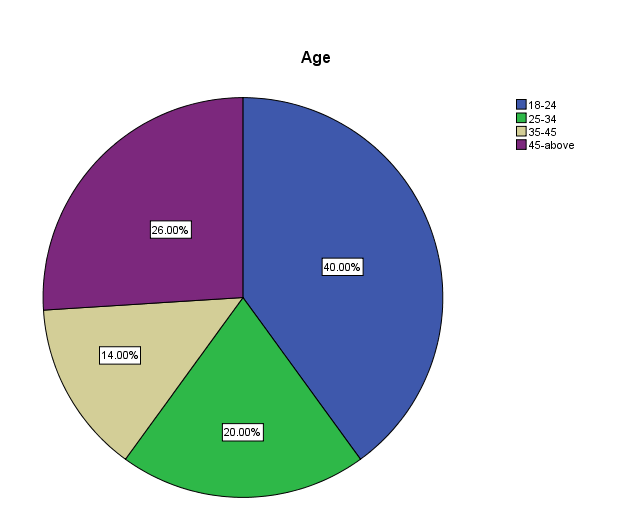
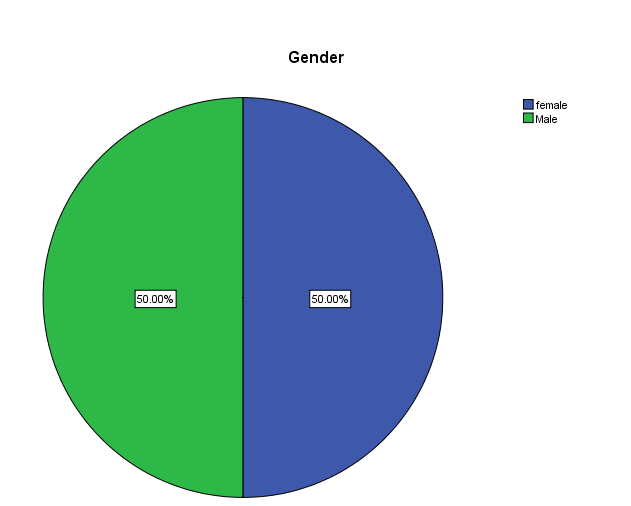
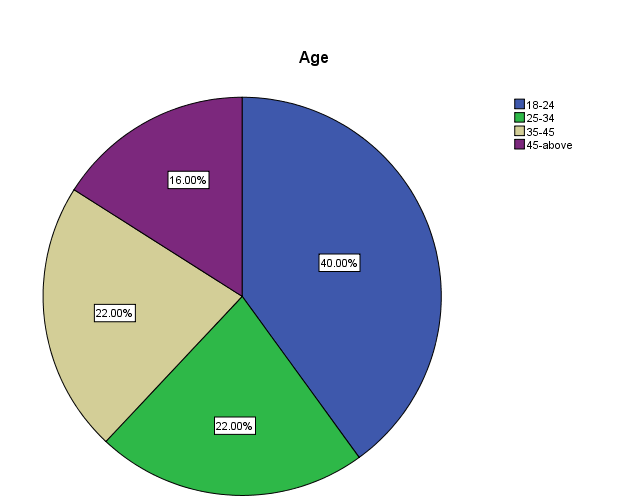
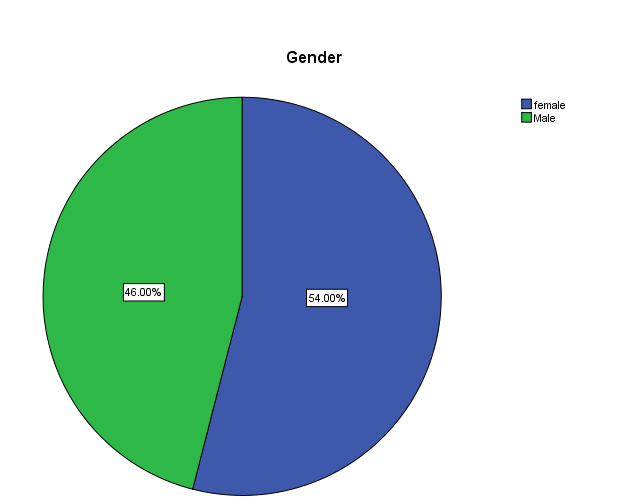
Type of Phone
The majority of respondents in the UK use smartphones, i.e. 48% and in Saudi Arabia, 54% of respondents use smartphones. The findings show that in Saudi Arabia and the UK, people prefer to buy technologically advanced phones that are expensive too.
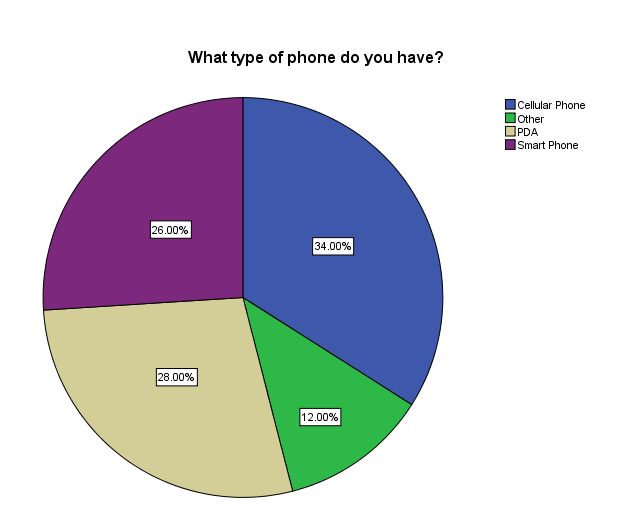
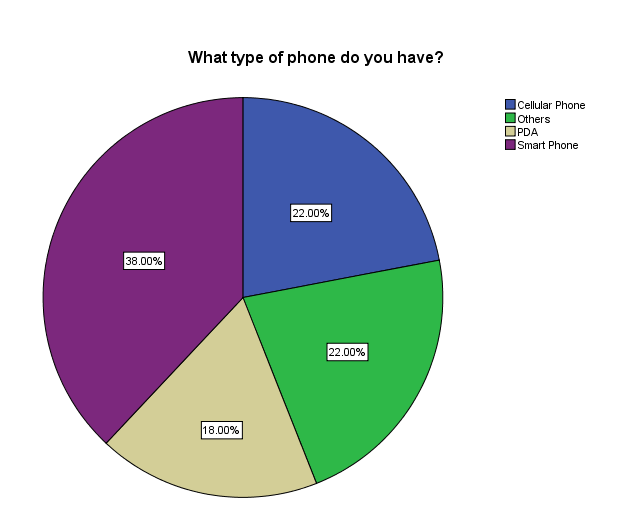
Favourite Network
17 respondents in the UK use O2. Among other popular networks in the UK are Vodafone, Orange, 3 mobile, and T-Mobile. In the same manner, the majority of respondents – 19 respondents in Saudi Arabia who use the mobile services of Mobily. Other popular networks in this list are Zen, STC, and other mobile networks. These findings give an idea of popular mobile networks in the UK and Saudi Arabia.
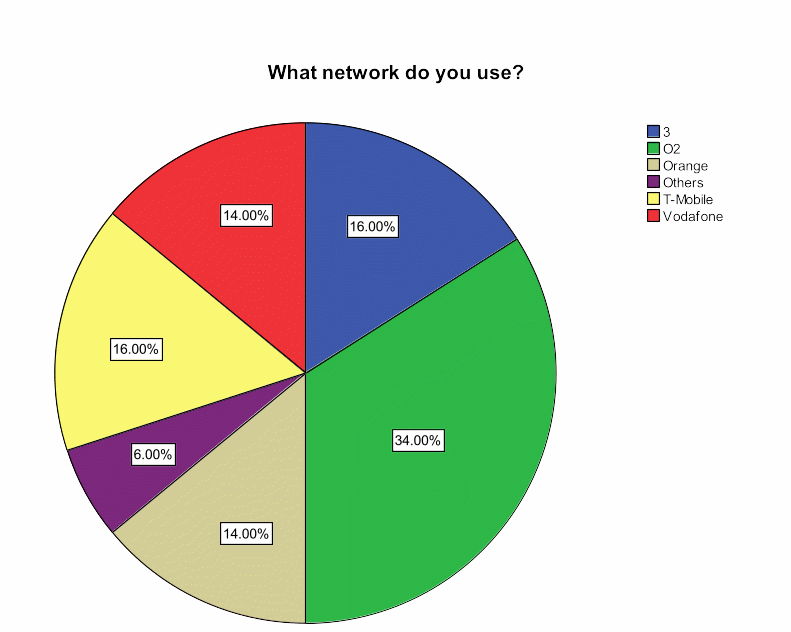
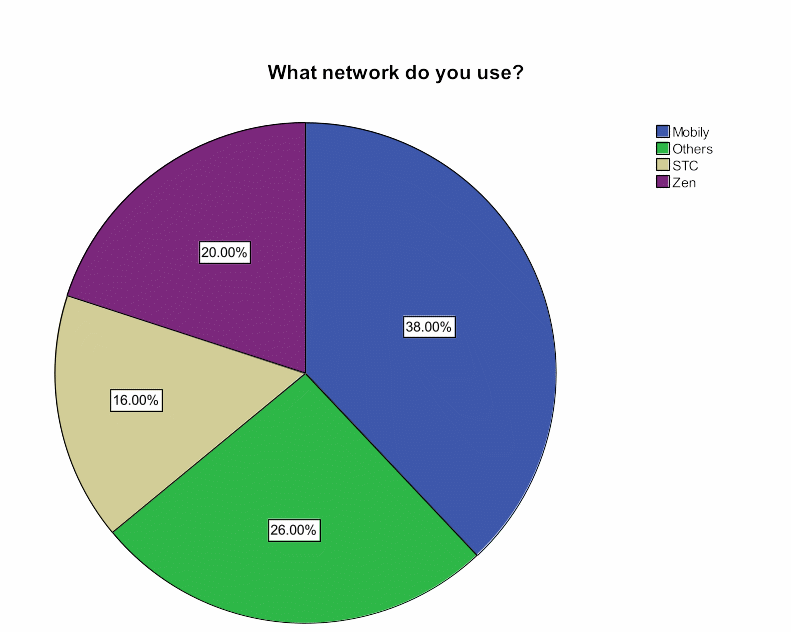
Best Advertising Medium to Influence Consumer Behaviour
In the UK, the most popular medium for advertising products is magazines with 18% of the respondents answering in favor of it. Mobile marketing is the least preferred advertising medium in the UK which shows that the mobile marketing industry is still in its developmental phase. But in Saudi Arabia, mobile marketing is growing quickly, as 16% of the respondents think that mobile marketing is an effective medium of advertising. Other popular advertising mediums in Saudi Arabia are online marketing channels and magazines. It is noticeable that in Saudi Arabia, there are no cinemas, this is the reason that none of the respondents answered with cinema as an advertising medium.
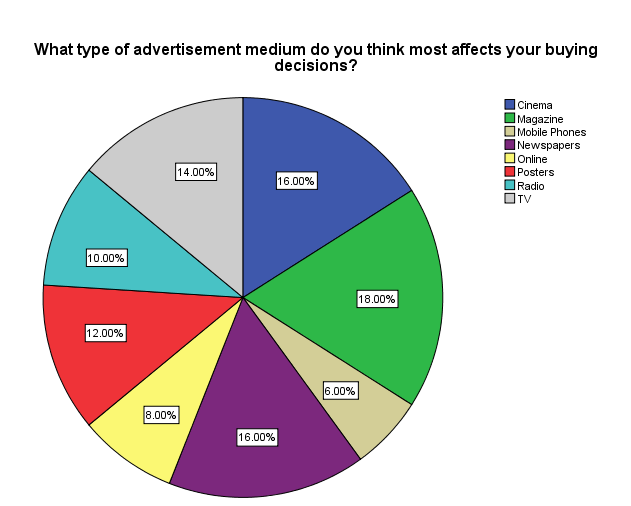
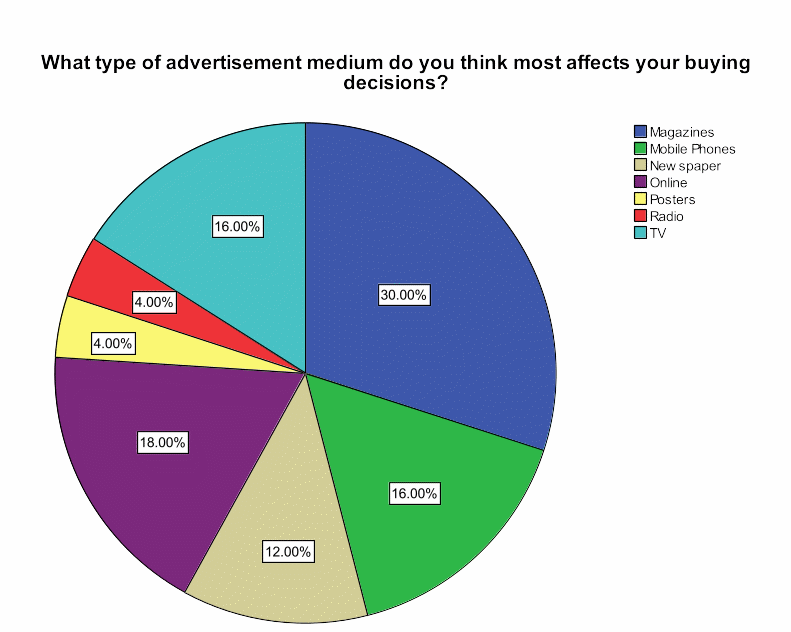
Mobile Advertisement on Mobile Phone
When the respondents in the UK and Saudi Arabia are asked whether they receive mobile advertisements on their mobile phones or not, the majority of them responded that they receive mobile advertisements on their mobile phones. There were many respondents, i.e. 50% in the UK and 60% in Saudi Arabia, who either do not know that they receive a mobile advertisement or they do not receive it. The results reflect that the target audience of mobile marketing in these countries is still new to these advertisements and at times, it is difficult for them to differentiate mobile advertisements from spam messages.
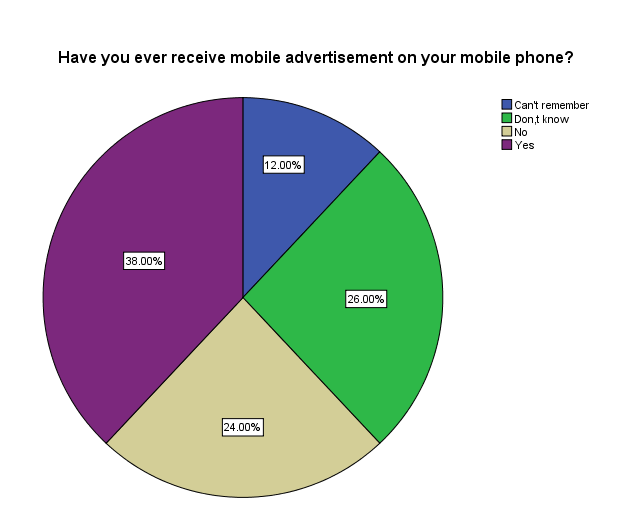
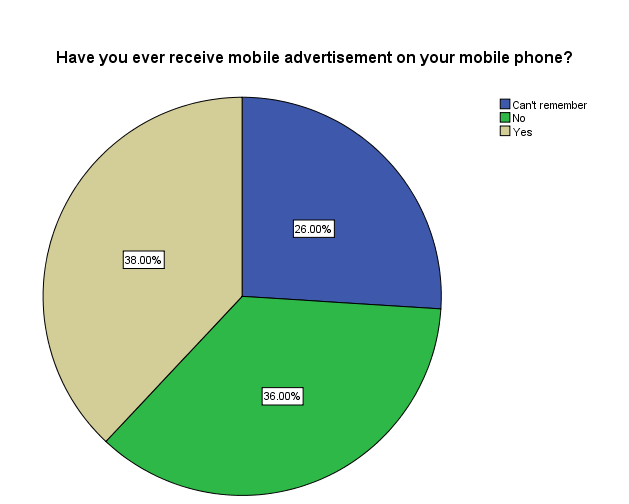
Agreeableness to Receive Mobile Advertisement
The majority of the respondents in the UK do not know that they ever agreed to receive mobile advertisements or not whereas, in Saudi Arabia, 20% of the respondents never agreed to receive mobile advertisements on their mobile phones. Also, there are 26% of the respondents in both countries who do not remember whether they agreed or not, to receive mobile advertisements. The findings show that majority of the respondents may be receiving mobile advertisements on their phones without providing approval to the marketers.
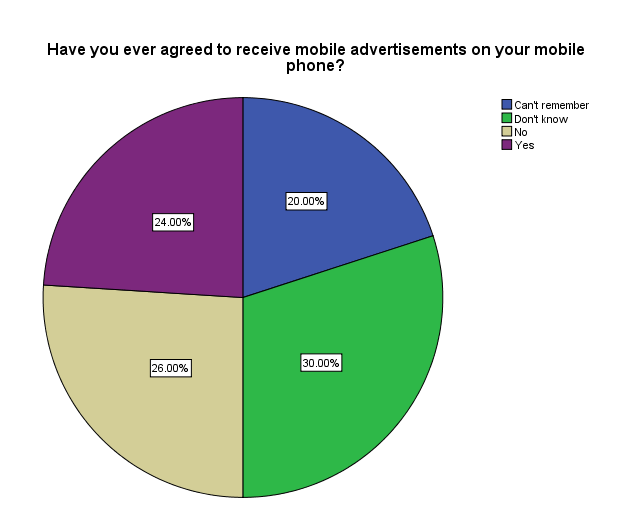
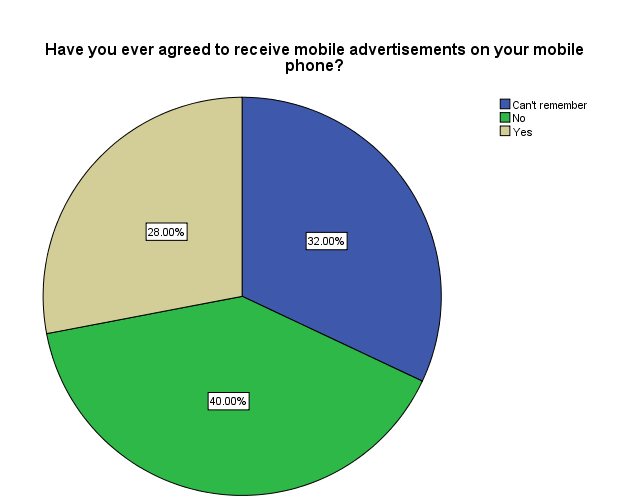
Number of Mobile Advertisement Received in Last Week
The majority of respondents in Saudi Arabia responded that more often receive advertisements from marketers on their mobile phones, whereas in the UK these figures are low, and 26% of respondents said that they receive only one or two mobile marketing messages in a week. It is clear from the findings that mobile marketing is more utilized by Saudi marketers as compare to marketers in the UK.
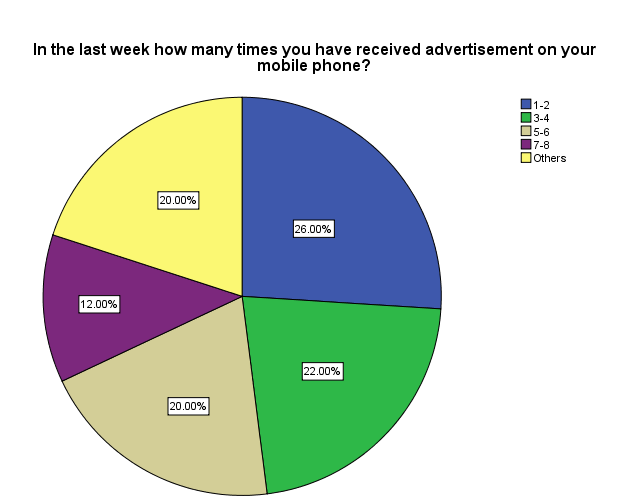
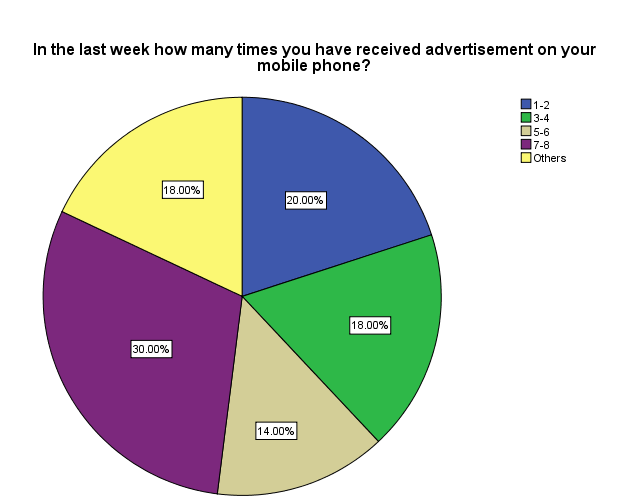
Sports Good Bought in Last Month
When the respondents were asked about their purchasing of sports goods in recent times, 57% of respondents in both countries said that they either do not remember or they have purchased sports goods in the last one month. The findings from this question imply that people in Saudi Arabia and the UK purchase sports goods frequently.
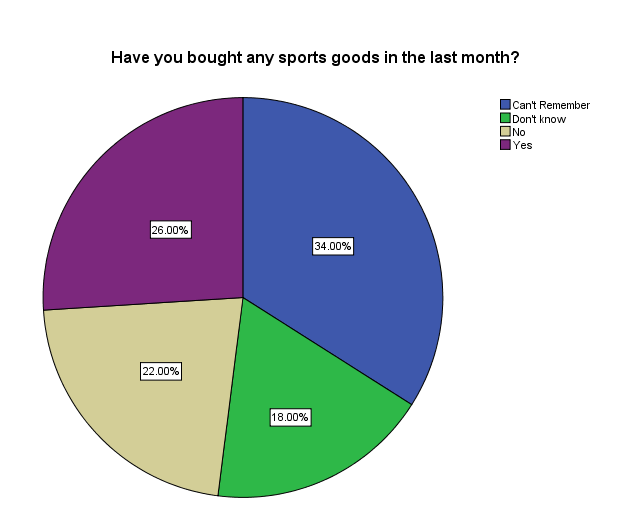
Favourite Sports Brand
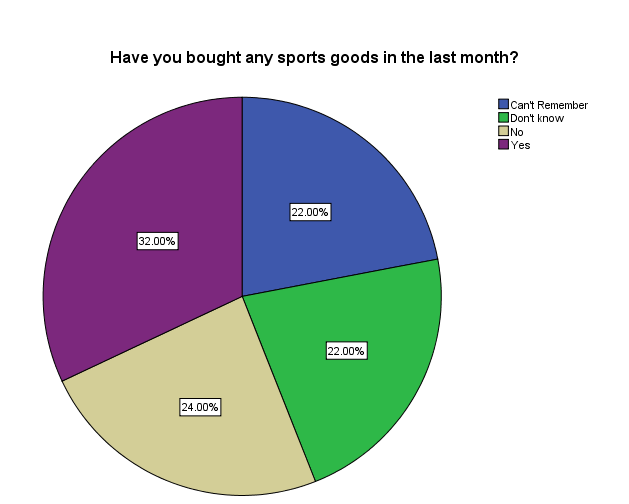
According to the responses collected in the UK and Saudi Arabia, the favorite sports brand in the UK is Nike with 20 respondents answering in favor of Nike, whereas in Saudi Arabia, it is Reebok where 12 respondents answered in favor of Reebok. The competition in the sports goods industry in Saudi Arabia is intense as the difference between the responses is not much; whereas in the UK, Nike and Adidas dominate most of the market share of the sports goods industry.
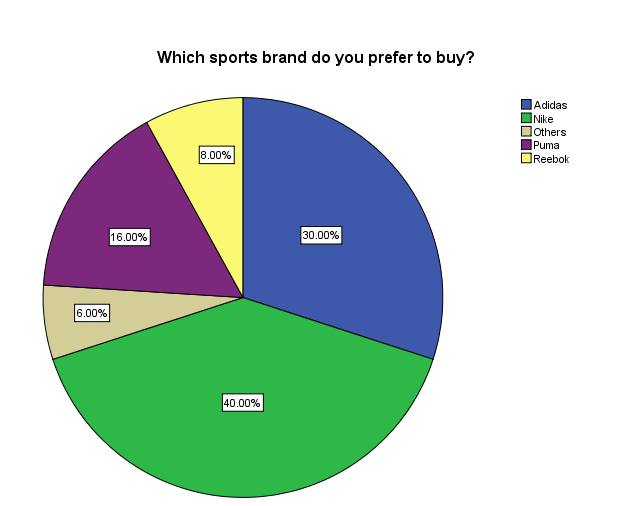
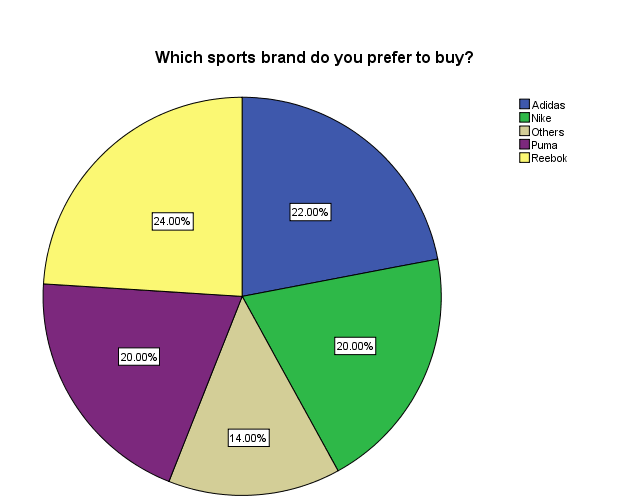
Mobile Advertisement Received from Sports Brand in Last Month
In the UK, 17 respondents did not receive any mobile marketing message from a sports brand, whereas in Saudi Arabia, only 9 respondents said that they do not receive a mobile marketing message from any sports brand. 15 respondents in the UK said that they do receive mobile advertisement from sports brands last month and 12 respondents did not remember which reflects that majority of the respondents might have received a mobile advertisement in the last one month. In Saudi Arabia, these figures improve, where 16 respondents responded that they did receive mobile marketing messages in the last one month and 20 respondents said that they either do not remember or they do not know whether they receive mobile advertisements from a sports brand. The results strengthen the idea that mobile marketing is more popular and effective in Saudi Arabia as compared to the UK due to the attractiveness of the market in Saudi Arabia. People are rich and their purchasing power is far better than people in the UK.
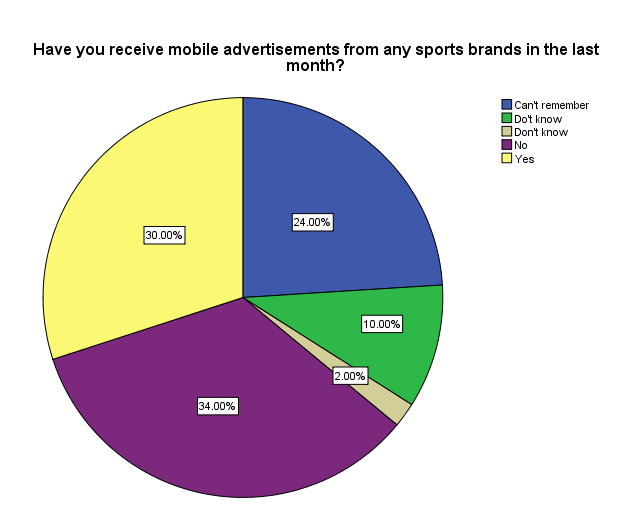
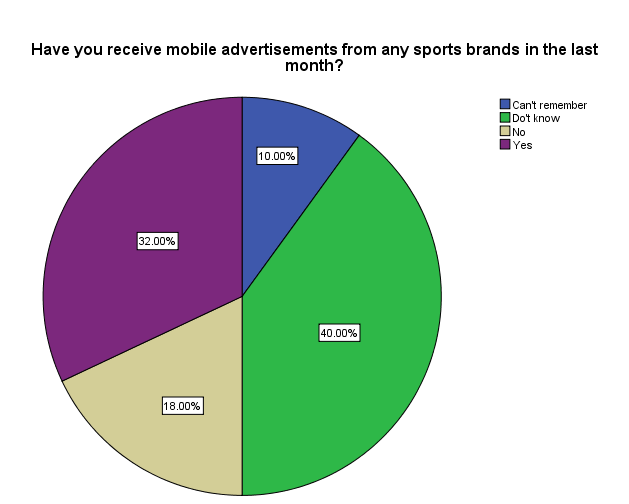
Content of Mobile Advertisement from Sports Brand
According to the responses collected against the question which inquired about the content those respondents receive in mobile advertising, 34% of the respondents in the UK and Saudi Arabia said that these messages focus on attracting people towards purchasing sports brand or they promote the new offers and products of these sports brand. Especially in Saudi Arabia, Sports brands use mobile marketing channels frequently to create awareness and promote their offers and discounts.
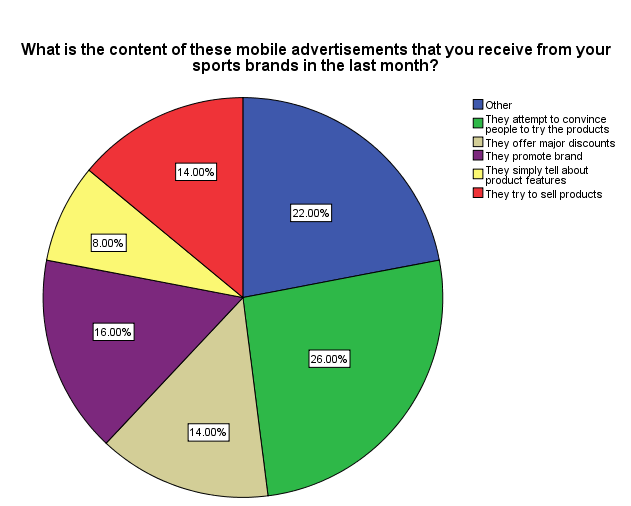
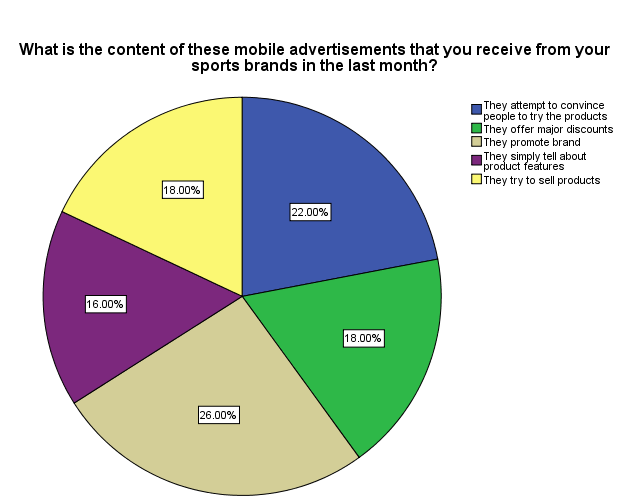
Mobile Advertisement from Adidas or Nike
Adidas in Saudi Arabia and the UK is pretty much active in utilizing mobile marketing medium. In the UK, 28 respondents receive mobile marketing messages from Adidas, and 22 receive marketing messages from Nike. In Saudi Arabia, the competition seems to be intense, as discussed before, and both Nike and Adidas are equally involved in utilizing mobile phones as a marketing medium.
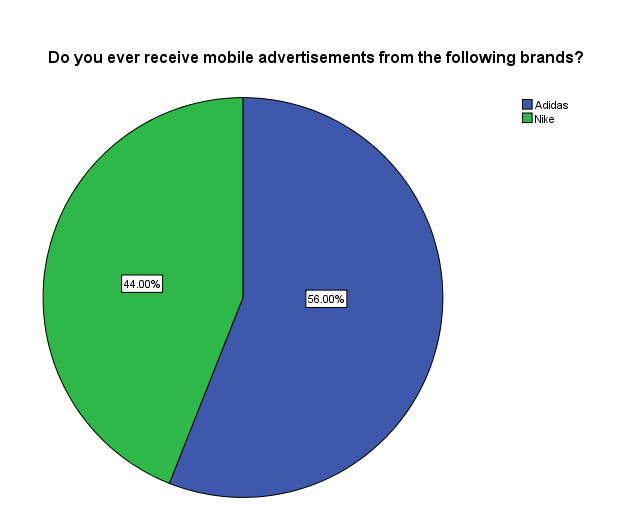
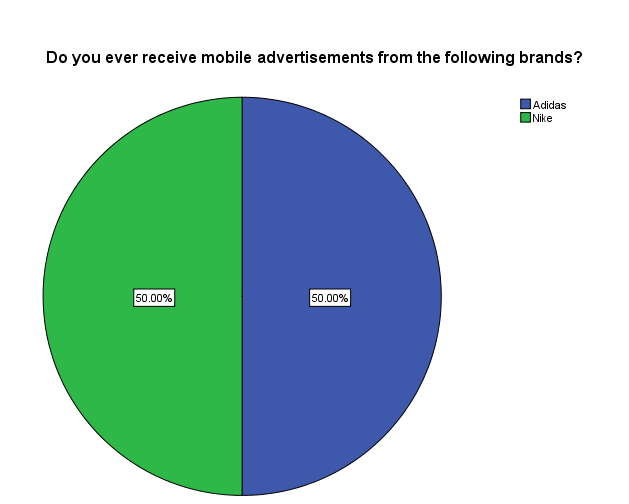
Analysis of Mobile Advertisement from Adidas
Mobile Advertisement Introduced the Brand
In the UK, 62% of the respondents are convinced that mobile advertisement sent by Adidas is effective in introducing a brand to the market whereas 42% of respondents in Saudi Arabia agree that mobile marketing by Adidas is effective in introducing a brand. According to the majority of responses, mobile marketing from Adidas seems to be an effective medium for promoting or introducing a brand to the target market.
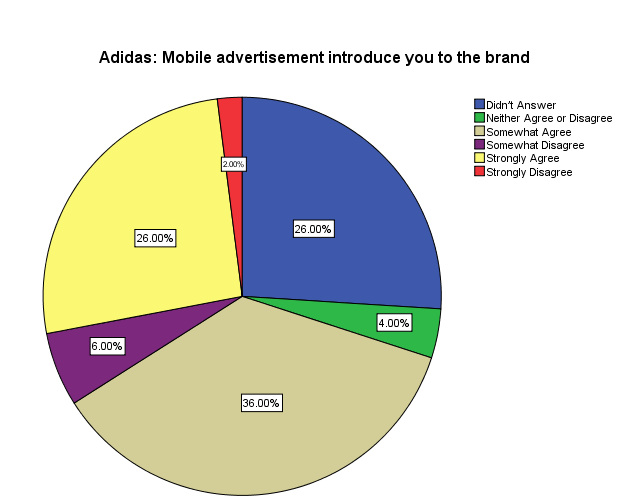
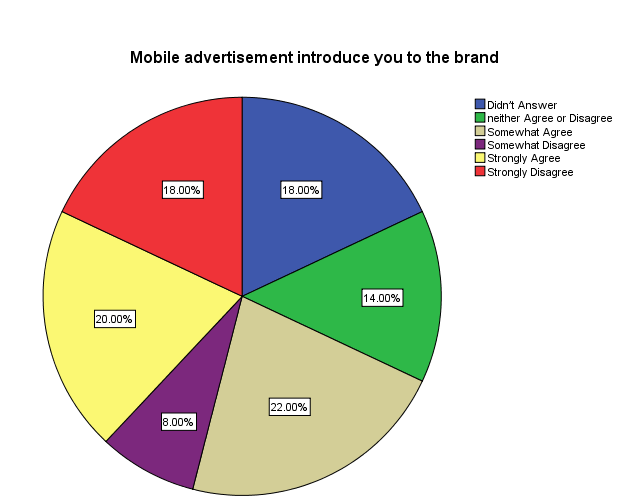
Regular Mobile Advertisement Keeps Users Update
According to the responses collected against the question inquiring the effectiveness of mobile marketing by Adidas to keep the target market update regarding their promotional offers and products, 16% of the respondents in the UK agree with the idea and in Saudi Arabia, only 8% strongly agrees with the idea. Also, 15% of respondents in the UK are convinced of the effectiveness of mobile advertisement and 11% in Saudi Arabia are of the view that mobile advertising by Adidas provides them enough updates regarding their product updates. The idea generated here is that Adidas is utilizing mobile marketing channels less effectively in Saudi Arabia, as compared to the UK.
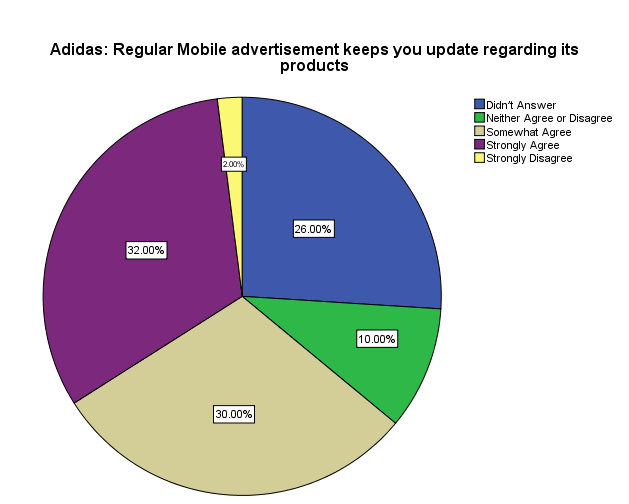
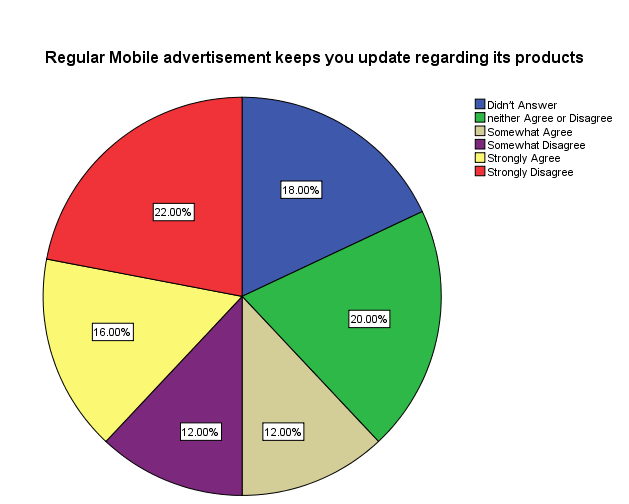
Mobile Advertisement Increase Awareness
In the UK, Adidas’ mobile marketing is effective in creating awareness about its products and offers, as it is shown by the results, where 30% of the respondents strongly agree and 26% somewhat agree. In Saudi Arabia, the researcher gets mixed answers to the same question, as 18% of respondents strongly disagree that Adidas’ mobile marketing messages are effective in creating awareness and 18% of respondents think that Adidas is utilizing mobile marketing medium effectively to create awareness among the target market.
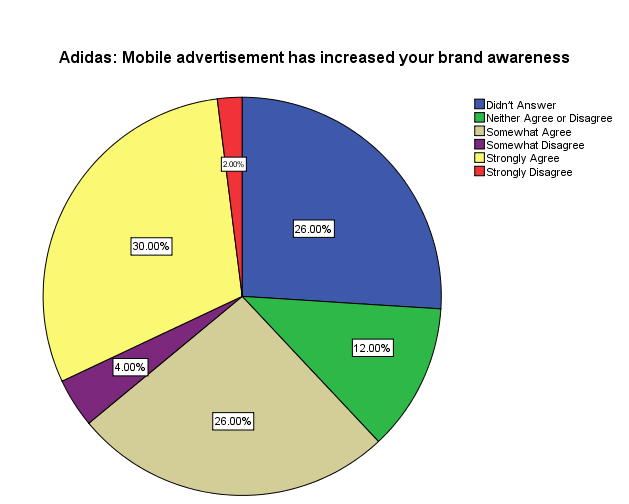
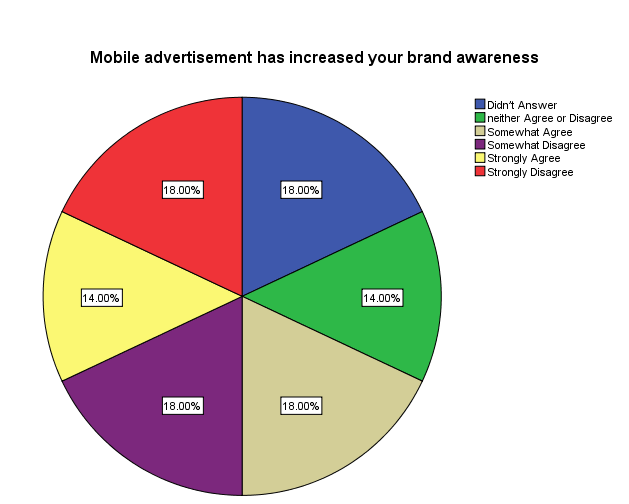
Mobile Advertisement Effects Buying Decisions
According to the results provided in the tables below, the researcher is of the idea that mobile marketing by Adidas in Saudi Arabia is less effective in deriving customer’s buying in favor of Adidas as compare to the UK. In the UK, 28% of respondents strongly agree and 24% somewhat agree that their buying behavior is affected by the mobile marketing messages sent by Adidas. In Saudi Arabia, only 3 strongly agree and 12 respondents somewhat agree with the same idea.
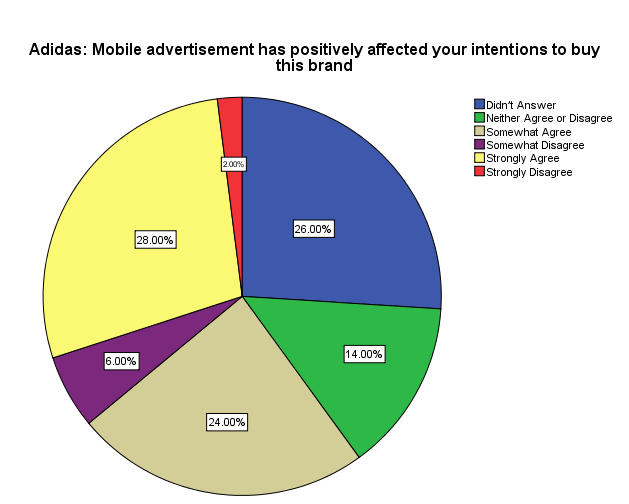
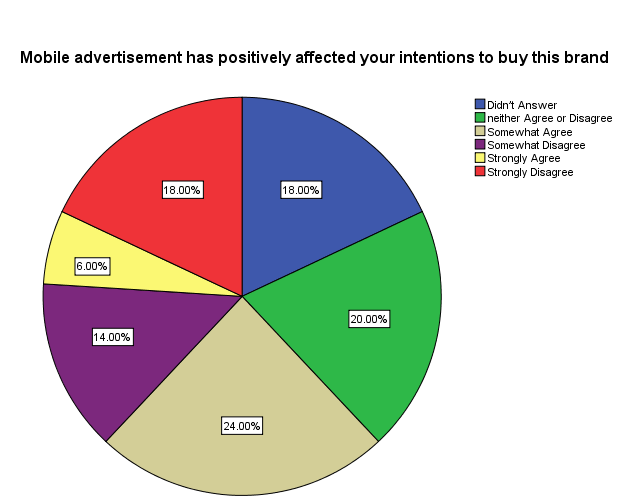
Better Mobile Advertisements
When asked whether Adidas’ mobile advertisements are better than Nike or not, most of the respondents in the UK and Saudi Arabia strongly agreed with the idea. 22% of respondents in Saudi Arabia and 26% in the UK believe that Adidas’ mobile advertisements are better than Nike’s.
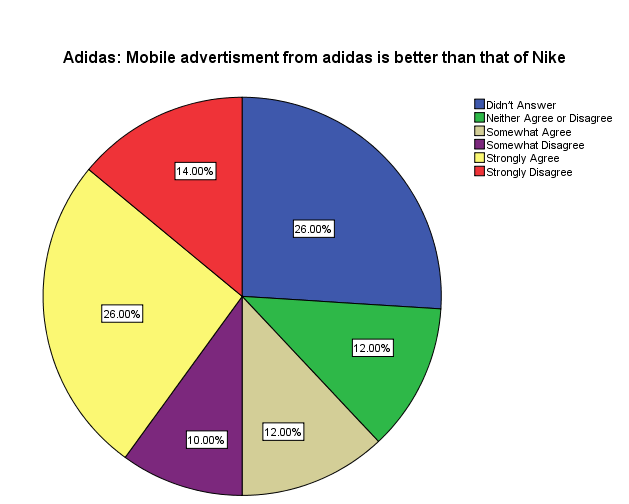
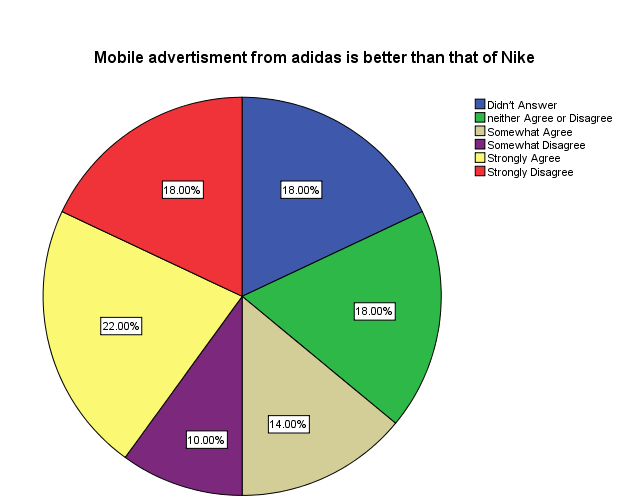
Description of Mobile Advertisement’s Content from Adidas
The responses collected for the question that intended to inquire about the content of the mobile advertisement sent by Adidas showed that in the UK, respondents find it interesting and attractive, whereas, in Saudi Arabia, more people think of them as boring. In the UK, 78% responded in favor of the mobile marketing content of Adidas and Saudi Arabia, 64% of respondents responded in favor of the mobile marketing messages’ content of Adidas.

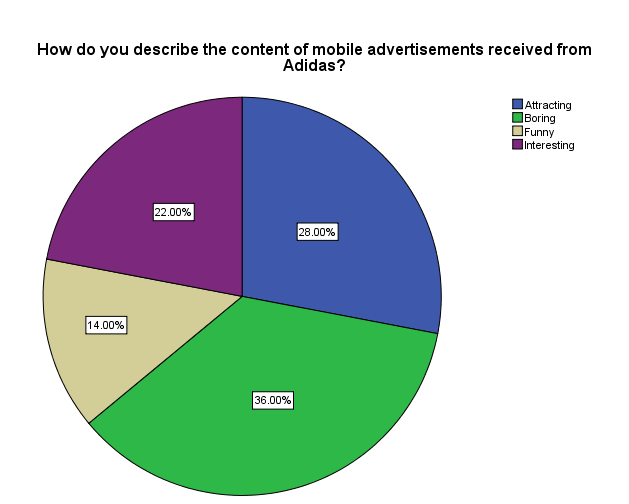
Analysis of Mobile Advertisement from Nike
Mobile Advertisement Introduced the Brand
In the UK, 62% of the respondents are convinced that mobile advertisement sent by Nike is effective in introducing a brand to the market whereas 38% of respondents in Saudi Arabia agree that mobile marketing by Nike is effective in introducing a brand. According to the majority of responses collected, mobile marketing from Nike seems to be an effective medium for promoting or introducing a brand to the target market.
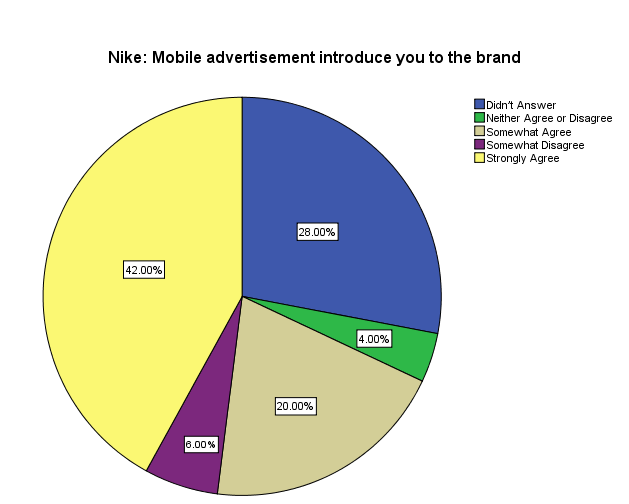
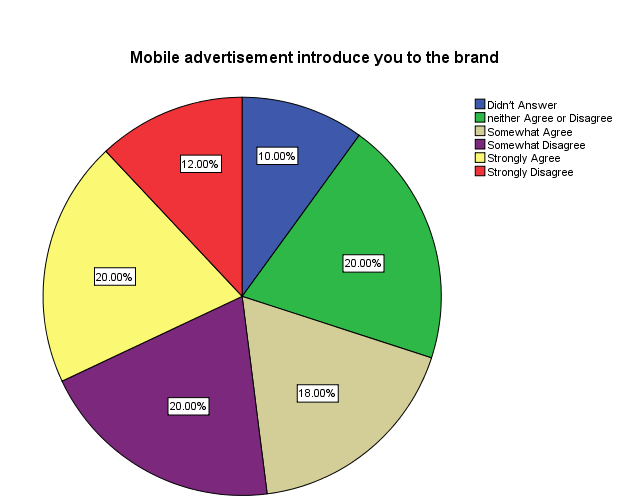
Regular Mobile Advertisement Keeps Users Update
The situation for Nike’s mobile marketing campaign’s effectiveness in keeping users update is better in Saudi Arabia as compared to Adidas. According to the respondents, 15 of them agree that Nike keeps the users update with its mobile marketing messages. In the UK, 15 respondents replied in strong favor of Nike’s mobile marketing’s effectiveness to keep users updated whereas 10 respondents somewhat agreed with the idea.
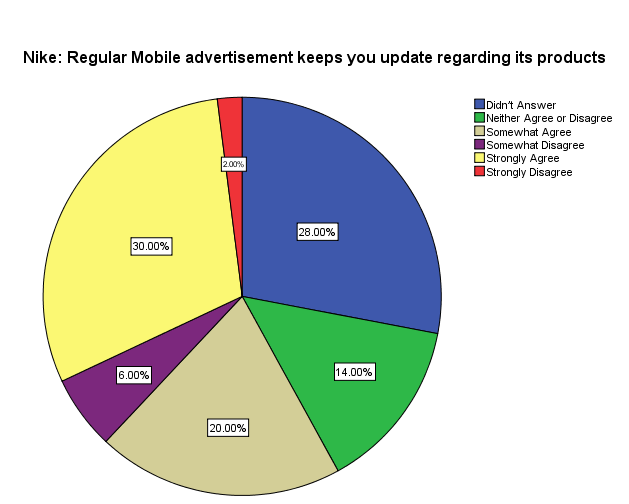
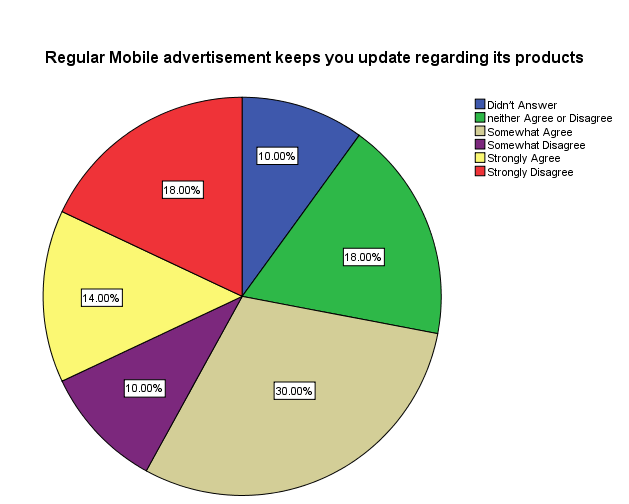
Mobile Advertisement Increase Awareness
The respondents to the survey in the UK are of the view that Nike’s mobile advertisements create awareness about the brand. 28% of them strongly agree with Nike’s mobile advertisements’ effectiveness to create awareness and 26% somewhat agree with the idea. The same is the story in Saudi Arabia; where 38% favored the idea Nike’s mobile advertisements create awareness about the brand and its products.
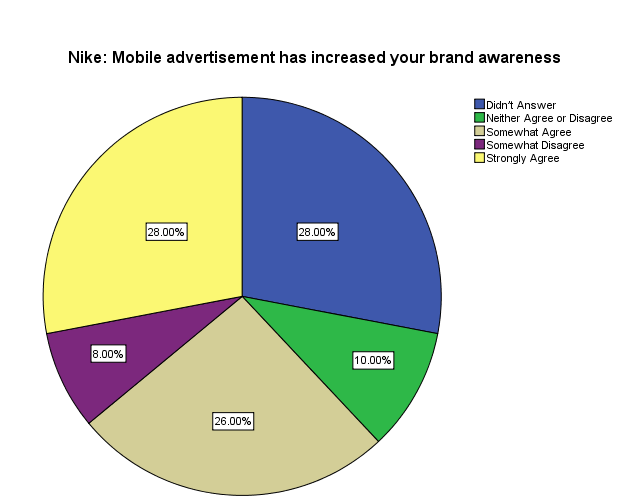
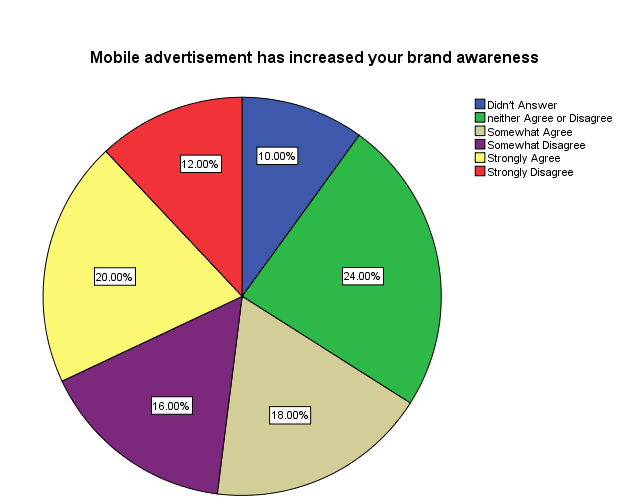
Mobile Advertisement Effects Buying Decisions
According to the responses collected, Nike has been successful in the UK and Saudi Arabia in achieving consumer’s acceptance to change their buying behavior, through mobile advertising. In the UK, 48% of respondents either agree or somewhat agree, whereas in Saudi Arabia 46% either agree or somewhat agree with the idea.
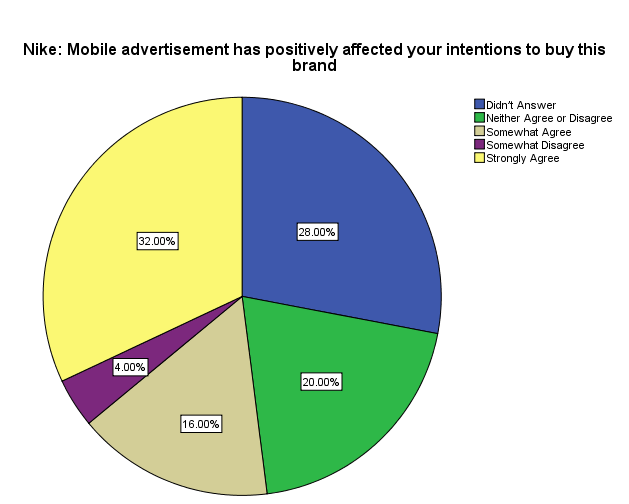
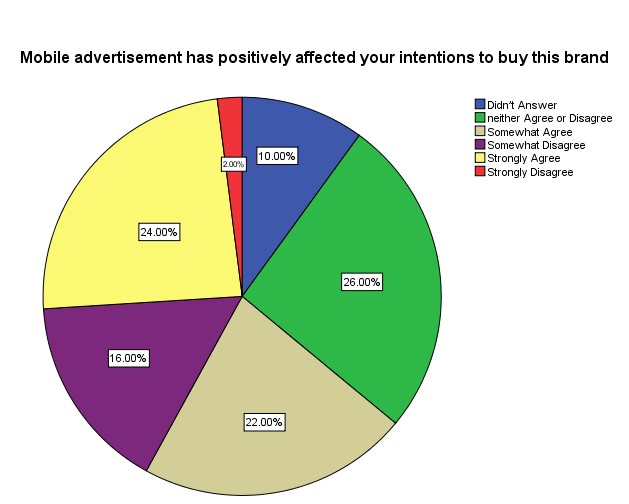
Better Mobile Advertisements
Respondents were asked the same question about Adidas and they agreed that Adidas has better mobile advertisements as compared to Nike. Here, when respondents were asked whether Nike’s advertisements are better than Adidas, most of them in the UK and Saudi Arabia either agreed or somewhat agreed. These results show ambiguity in respondents’ responses whether Nike’s mobile advertisements are better than Adidas’. Moreover, as the findings are subjective to respondents’ answers, these findings seem improper to make a clear distinction to point out which company’s mobile advertisements are better.
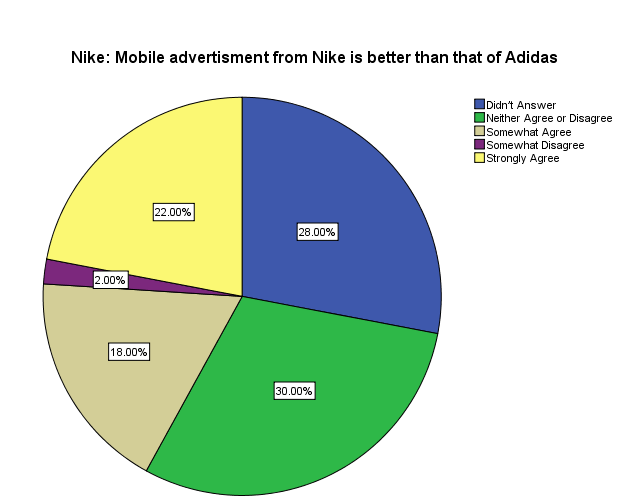
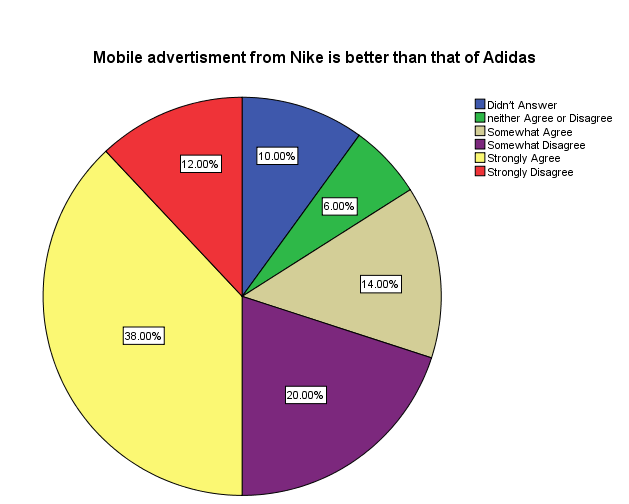
Description of Mobile Advertisement’s Content from Nike
Just like Adidas, most of the respondents in the UK and Saudi Arabia think of Nike’s mobile advertisement content as attractive, funny, and interesting. In Saudi Arabia though, 13 respondents found Nike’s content boring. There is a mixed reaction in both countries towards Nike’s mobile content overall.
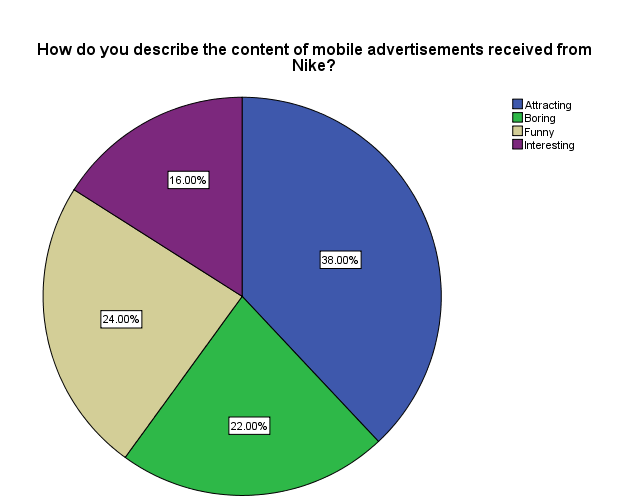
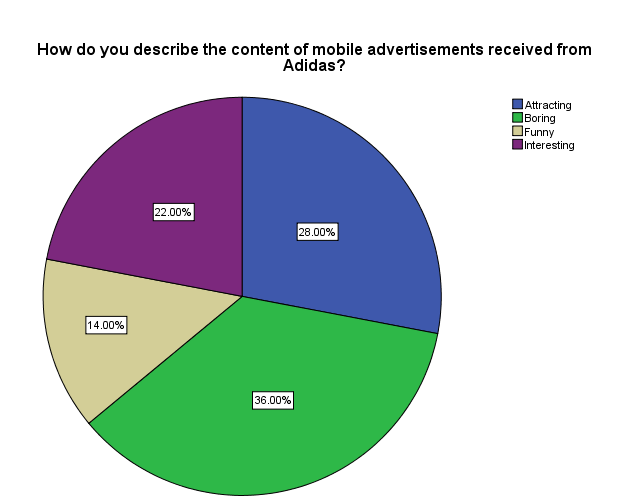
Do you want to make any recommendations for making the mobile advertisement of Adidas more effective?
The majority of the respondents recommended that the marketing message designed by Adidas should be more attractive and contain enough information regarding the promotions and products to persuade customers to reflect positive behavior towards the marketing message. Another recommendation that the respondents provided for Adidas is that the company should hire a marketing strategist who is responsible to make effective advertising messages and address the issue of customer privacy. These concerns raised by the respondents show that the mobile marketing messages of Adidas might be causing a disturbance in customer’s privacy and hurting the brand image and the marketing efforts are going in vain.
Do you want to make any recommendations for making the mobile advertisement for Nike more effective?
Nike’s mobile advertisement campaigns are widely accepted among the respondents but the major problem which is reflected in respondents” recommendation is the content of Nike’s message. Around 59% of the respondents think that Nike’s mobile marketing messages are not attractive and contain miss representing content regarding promotions and products. 30% of the respondents didn’t answer this particular question and 11% are of the view that Nike is marketing its products and promotional offers through mobile marketing effectively and there is no room for further improvements.
Secondary Findings
Secondary findings entail the research literature available from publically published articles and research work. This section provides an in-depth analysis of how researchers and scholars perceive mobile marketing and its evolvement as an effective marketing medium.
An article quoted Adidas and Puma’s successful implementation of mobile marketing strategies and stated that their success has created more hype about this relatively new medium of advertising among other industries and businesses. This medium of advertisement gained more popularity among sports brands during the Fifa World Cup 2010 in South Africa, where these global sports brands took full advantage of the event and promoted their contribution through mobile marketing. Discussing the benefits of mobile advertising, the author said that the best part of mobile advertising is that even the smallest business entity can promote its products through mobile advertising because it’s cheap, fast, and hit the exact area that the company has identified as its target audience. The report revealed various facts and figures, among which the top 20 countries for mobile advertising were also listed. Interestingly, Saudi Arabia was included in this list (Kats 2010).
In 2008, Puma launched a new marketing campaign which, according to Puma, was the biggest mobile marketing campaign in history. The focus of this marketing campaign was Euro 2008 and the campaign was launched in all 16 participating countries in the tournament. This campaign helped the sports giant to attract a huge number of fans who gathered in Austria and Switzerland. These fans purchased a huge number of Puma’s products after receiving discount offers and deals on their mobile devices from Puma (Mark 2008).
In their study, Khurana and Chaudhary (2010) explained the impact of mobile advertising by sports brands on their customer relationship activities. They said that that sports brand has benefited from mobile advertising as it helps them to be efficient in managing the relationship with the consumers of their products. It has narrowed the bridge between the customer and the company which in return has able to win customers’ loyalty and patronage for the companies’ products and offers. Because of its effectiveness, mobile marketing has helped sports, good manufacturers, to achieve the target of attaining a significant portion of the target market. It is reliable and has delivered up to the expectations of these companies. All a sports brand is needed is to ensure that the message is clear and understandable by the customers; the return will be customer loyalty and a better brand image enjoyed by the company (Khurana and Choudhary 2010).
It has been observed that more and more customer prefer receiving information that can prove beneficial to them and not only those that communicates to them with the sole intention of profitability. Customers nowadays prefer directly contacted with real and relevant messages that can substantially provide them with a proper content in their mobile ads. The rationale is simple. These people don’t want their time wasted. Nike and Adidas are now trying to make an impression and they intend to make that impression for good. Part of their innovative program is to create a slogan that will leave a lasting impression by rebranding itself into attracting more young customers. They are doing this to catch up with the competition that their rival is showing this. They are focusing on strengthening their company by selling their products at a much lower cost in lower-tiered areas of the target market and soon they shall be spreading to the rest of the regions.
Adaptation by Adidas and Nike
According to Chang (2010), the mobile advertising industry is experiencing wild competition among sports brands which has helped this industry to gain strength, especially in recent 5 years. Nike covers a market share of 21% by the end of the year 2010 (Trefis 2010) whereas Adidas holding 34% of the market share worldwide during the same period (Adidas-Group 2010). Both of these companies are using mobile advertising to promote their offerings due to the huge impact that this medium puts on consumers. Adidas has established itself as a worldwide leader in utilizing mobile marketing channels. On the other hand, Nike is also utilizing this source for efficiently promoting its products. With two of the most prestigious sports brands, Nike and Adidas involving in mobile advertising activities, the mobile advertising industry as well as the sports good manufacturers has to carry out massive changes in their business strategies and formulate new marketing tactics. Nike and Adidas have managed to offer their products at affordable prices to make it possible, the reach every segment in the market with their products. In markets, where these two companies had to face difficulties in the past, they have penetrated successfully due to this price lowering strategy. Another success factor that has allowed these companies to move forward has been mobile marketing, which is cheaply and covers a wide area of the target audience (Chang 2010).
Chang also discussed Nike’s five-year plans for developing the sales of domestic products. Chang wrote that Nike is looking to adopt a strategy that allows them to positively impact the procurement, production, sales, and services better than before. The way they do this is not only to make a sale to customers but the intention is to give their online users an experience that they would find valuable. For gaining strength in online sales, Nike has adopted a mobile marketing strategy so that it can reach the masses in a large area and create awareness about their products. Nike’s products are also available in-store for those customers, who still do not possess reach to technology. Nike’s main goal is to create connections among users and that is an experience that they want to share something worthwhile and priceless to some people especially to those ordinary consumers. Nike’s mobile advertising campaign has become so much popular that the recipients of these ads made 84,000 downloads of provided content by Nike and 9,200 recipients responded to the survey sent by Nike on their cell phones. These figures are nearly 150% higher as compare to what Nike expected from this campaign (Cell Phone Advertising 2007).
On the other hand, according to a mobile technology source based website, jackmyers.com, Adidas has also adopted a mobile marketing strategy in which it is depending upon stardom to attract the masses. Adidas’ mobile marketing is featuring basketball stars, to which the audience is emotionally attached and admires them. Their mobile marketing campaign is targeting the young generation because mobile marketing serves this demographic section in the best manner. This marketing strategy has proven to be successful to this point and gaining more popularity day by day. So far, this ad campaign has produced 5 million mobile impressions on the ads, a phenomenal 80,000 page views to the mobile site in the first week of launching this mobile ad campaign, over 100,000 people opted in and nearly 10,000 fans called their favorite basketball stars that are featured in this mobile ad campaign (Cell Phone Advertising 2007).
Discussion
The findings of this study focus on presenting a detailed discussion of different dimensions of consumer behavior and the impact of mobile marketing to influence consumer behavior. As it has been laid down in the conceptual framework of the study, the objective of this research is to study consumer behavior for sports brands which is influenced by mobile marketing from sports brands. This section contains the findings of this whole dissertation, discussed in the light of research questions formulated in previous chapters.
The first research question measures the effectiveness of mobile advertising on consumer behavior. From the findings of this study, it is clear that mobile advertising has been quite effective to influence consumer behavior in Saudi Arabia and the UK. In the UK, mobile marketing has been a successful medium to influence consumer behavior, whereas, in Saudi Arabia, people are still reluctant in showing major interest in mobile marketing messages. This may be due to the cultural and social structure of both societies, wherein in the UK, people are more outgoing and in Saudi Arabia, people are more introverted. The major finding of this study is the steady growth of mobile marketing as a marketing medium and the increased usage of different brands. As Tsang et al. (2004) suggested that mobile devices are becoming more and more popular to be used as a marketing medium. A similar idea has been shared by Prenzel (2009) who reported that billions of dollars are now put into mobile marketing to shape up consumer behavior by frequently sending marketing messages to the target audience. Nike and Adidas are also involved in frequently sending marketing messages to the target audience to change buying behavior by influencing consumer’s attitudes.
The second research question inquires about the impact of mobile marketing on consumer’s behavior towards sports brands in Saudi Arabia and the UK. As presented in the findings of this study, mobile advertisements have faced little difficulty with influencing consumer attitudes. Nike and Adidas both have been popular in Saudi Arabia and the UK, and they are widely making use of this new marketing medium. Nike especially is involved in utilizing mobile marketing mediums more effectively than Adidas, although Adidas has been considered a pioneer in mobile marketing. On other hand, Adidas and Nike are considered to be equal in ranks when it comes to rating their utilization of mobile marketing channels. During the primary research, respondents in both countries show a mixed reaction when they are asked to rate the most efficient sports brand utilizing mobile marketing medium. The content that these sports brands provide in mobile marketing messages is also designed to keep in view the social norms and cultural differences. As suggested by Cohen (1991) in his consumer behavior model, taking care of social norms is quintessential to influence consumer attitude. For this reason, the marketer must know his target audience, the right message to deliver, and the knowledge of the segment’s traits, as suggested by Berlo (1960). The multi-attribute model by Ajzen and Fishbein (1980) also suggests that the content of a mobile marketing message must address the evaluation of this message by the target audience.
Mobile advertisement in the UK and Saudi Arabia is considered to be an effective medium to introduce a brand to the target audience. The researcher is of the view that Nike and Adidas utilize mobile marketing messages to acknowledge the target market about its products, to provide updates, to create brand awareness, and to influence consumer’s buying behavior. In this manner, brand value and brand followership are increased; as the findings show that majority of the respondents is a regular buyer of sports brands. Cohen (1991) suggested that followership and building brand value and image helps a brand to win consumer’s intention to make a buying decision.
The next step in this study is to evaluate the influence of consumer attitude and intention in designing their buying behavior related to sports goods. The present study provides that consumer intention and attitude have a positive impact on consumer behavior. This is supported by the theory of planned behavior suggested by Ajzen (1991), who is of the view that there exists a relationship between consumer’s intention and attitudes towards a brand or product, subjective norms, and perceived behavioral control. In the UK, mobile marketing by Adidas and Nike has been more successful as compared to Saudi Arabia, to shape up consumers’ intentions into actually buying decision. This again seems to be the result of cultural differences between both countries where one culture is more supportive of technological innovations and new ways of creating awareness and the others do not.
The findings of this study also reveal that the content that respondents receive from Adidas and Nike’s mobile marketing messages is usually very helpful in acknowledging new products and offers or promote any product or offer. There is an element of clarity in the mobile marketing messages of Adidas and Nike which helps the user to understand what the marketer is trying to communicate and let the target audience update themselves with the latest developments in the sports brand market. Shannon and Weaver (1949) presented the same idea of communication, in which they insisted that the whole communication process should be clear and completely defined and free of noise or lapse. Festinger (1957) is of the view that any inconsistency between meeting consumer’s expectations or any difference in opinion for shaping up positive consumer attitude would cause discomfort among them and compel them to switch towards alternatives.
Summary
The findings from the primary research that has taken place in the form of the interview are presented in this chapter which is then discussed comprehensively in regards to the research questions set out at the outset of this report. The discussion has indicated major highlights of the study which show that individuals using mobile phones in the UK are more affected by mobile marketing as compared to individuals in Saudi Arabia. This has been highlighted as a result of the differences between general consumer cultures that exist in a developed country as compared to a country where although technology is increasingly sought after consumers still are less attracted by mobile marketing. Both companies Nike and Adidas have been successfully carrying out their mobile marketing activities, however; the results do not suggest which company is better than the other.
Conclusion
Consumer behavior has always remained a center of marketer’s strategies and special emphasis has been put in this direction to generate effective strategies to influence consumer’s buying behavior. Consumer’s cantered marketing strategies help organizations to retain their customer base to increase their revenues and sales volume. Marketing departments of different organizations, more specifically sports brands, have aimed on understanding the dynamics of mobile marketing and its effectiveness, keeping in view the demographics and preferences of consumer markets in Saudi Arabia and the UK.
The present study presents a wide spectrum of ideas for future studies regarding the topic and the effectiveness of mobile marketing in different strategic and geographic market segments. The findings of this study help to formulate a direction in which the marketers can work according to the psychology and demand of the market. This dissertation also focuses on creating an understating of a different phenomenon evolving mobile marketing and the attributes of the target market, considering which marketers can gain more as compared to other marketing channels. During the study, the research finds that every respondent in both countries has its rituals, beliefs, and values which helps them to develop a certain buying behavior.
The results presented in this study are quantitative and the researcher utilizes both primary and secondary sources of data to present a clear picture of mobile marketing and its effectiveness and adaptation by sports brands. The results obtained reflect that cultural differences, purchasing power, and societal norms put a deep impact on consumers’ buying behavior. Mobile marketing is comparatively a new phenomenon in marketing channels, and it is also affected by the attributes of the society in which it is implemented. Adidas and Nike have achieved reasonable results by the adaptation of mobile marketing channels but there are areas, where both these companies have to consider to bring changes.
Recommendations for Mobile Marketing
Although the use of mobile marketing has been on the rise but expectations of greater market influence and affect on consumer behavior is somewhat restricted. There are certain recommendations that the researcher has made keeping in view the limited application of mobile marketing in affecting consumer behavior in Saudi Arabia in particular.
- The content of the mobile advertisement should be clear and attractive to individuals to indulge in buying behavior.
- The companies should make use of appropriate advertising software to ensure that the consumer data is updated regularly and trends in the mobile advertising market are fully integrated into the system to create interest of consumers in this form of marketing.
- The companies should do a benefit analysis of mobile advertising as it is not always necessary that expected results can be achieved therefore, other forms of medium particular web marketing should also be considered in connection with mobile marketing. This could help them to run both marketing strategies that complement each other.
Recommendations for Future Studies
One of the major issues with the present study has been the lack of statistical testing of results obtained from the study. Interview technique has been used for collecting responses and descriptive analysis has been carried out in this report because of the limitations of sampling. The use of statistical means with a smaller sample would not have been appropriate such methodology requires a larger randomly selected sample. However, any future study that may be focused on a similar research topic may benefit from the use of statistical methods which could assist in achieving an objective rather than a subjective approach to the study.
Reflection
This study has helped me to understand the cultural and geographical differences that exist among nations and influence their behavior accordingly. After this project, I am of the view that adopting innovative strategies and introducing new products time by time with new features, has always been a core element involved in organizations’ success. In my point of view, an organization cannot last for long if there are no research and development initiatives implemented by that organization. Mobile marketing is a relatively new phenomenon and I think, in the future, organizations may spend more on mobile marketing as compare to other marketing channels, due to the reason that the world is moving to a time where things are presented in a compact format which is easy to understand and communicate.
As people are on the move and need things with speed, mobile marketing seems to be a viable option as it can be read or seen anytime anywhere. In this project, the communication model of Shannon and Weaver (1949) has helped me a great deal in understanding the mobile marketing mechanism and how effective it can be. This model is a classic two-way communication system that enables a reader to completely understand the use of communication channels and how distortion can be avoided to make the communication process more effective. During the study, I had a chance to communicate with people belonging to different cultures which enhanced my knowledge about their geography and culture. Also, I was exposed to massive usage of mobile marketing channels by many companies other than Adidas and Nike who are providing funds greater than Nike and Adidas to their marketing departments. These organizations included several Telecommunication companies in Saudi Arabia and different fast-food restaurants in the UK.
List of References
Adidas Backpack., 2011. Adidas-Reebok Merger. Web.
Adidas-Group, 2010. 2010 FIFA World Cup™ already a sales success for Adidas. Web.
Air2Web, 2003. Permission-Based Mobile Marketing. Research Report. Atlanta: Air2Web, Inc.
Ajzen, Icek, 1991. The Theory of Planned Behavior. Organizational Behavior and Human Decision Processes 50, no. 2: 179-211.
Asligul, A., 2010. Analysis of Current Mobile Marketing Applications, Selected best Practices, and Future Development. Grin Verlag: Norderstedt.
Barwise, Patrick, and Colin. Strong, 2001. Permission-Based Mobile Advertising. Journal of Interactive Marketing (John Wiley and Sons, Inc.) 16, no. 1 (2001): 14-23.
Bauer, Hans, Stuart Barnes, Tina Reichardt, and Marcus. Neumann., 2005. Driving Consumer acceptance of mobile marketing. Journal of Electronic Commerce Research 6, no. 3: 181-192.
Bayazidt, 2010. The Evolution of Mobile Phones in Saudi Arabia (Present and Future). Web.
Berlo, D., 1960. The Process of Communication. Bogota.
Brill, M., 2011. Can’t Believe It’s Not Butter. Web.
Butcher, D., 2009. Unilever’s Axe runs a mobile marketing campaign with MTV. Web.
Butcher, Dan.,2009. Adidas Runs Mobile Campaign to Promote Sportwear. Web.
Cell Phone Advertising, 2007. Adidas and Nike’s mobile advertising campaigns get a staggering response. Web.
Chang, Bao. 2010. Nike, Adidas readjust marketing strategy. Web.
Christine.net, 2007. Top 10 Mobile Marketing Campaigns. Web.
Claude, S., and Weaver, W., 1949. A Mathematical Model of Communication. Illinois: The University of Illinois Press.
Cohen, J., and Charles, A., 1991. Affect and Consumer Behavior. Englewood Cliffs: Prentice-Hall.
Craig, C., And Douglas, S., 2005. International Marketing Research. New Jersey: John Wiley And Sons, Inc.
Diva, S., 2010. Why SMS Mobile Advertising Is Growing In Popularity For l Business Advertising. Web.
Festinger, L., 1957. The Theory of Cognitive Dissonance. California: Stanford University Press.
Frances, P. And Paap, R., 2001. Quantitative models in marketing research. Cambridge: Cambridge University Press.
Franzen, G., 1999. Brands And Advertising. New Jersey: John Wiley And Sons, Inc.
Friman, J., 2010. Consumer Attitudes Towards Mobile Advertising. Research Report. Aalto: Aalto University School of Economics.
Goggin, Gerard. Global Mobile Media. New York: Routledge, 2011.
Gravetter, F. and Forzano, L.A., 2009. Research Methods of behavioral Sciences. California: Cengage Learning.
Haghirian, P., Madlberger, M., and Inoue, A., 2008. Mobile Advertisement in Different Stages of Development. In Hawaii International Conference on System Sciences. Hawaii, 2008.
Haghirian, Parissa, Maria Madlberger, and Andrea. Tanuskova., 2005. Increasing Advertising Value of Mobile Marketing – An Empirical Study of Antecedents. 38th Hawaii International Conference on System Sciences. Vienna: Vienna Unversity of Economics and Business Administration, 1-7.
Hanbo, Z., 2008. Emerging business models of the mobile internet market. Research Report. Helsinki: Helsinki University of Technology.
Harjeet, S., 2011. Mobile Marketing: A Consumer-Controlled Market Mechanism. Web.
Hsu, Jane, and Wei. Chang., 2003. The role of advertising played in brand switching. Journal of American Academy of Business: 322.
Jayawardena, C., Kuckertz, A., Karjaluoto, H., and Kautonen, T., 2011. Antecedents to a permission based mobile marketing: An initial examination. Web.
Johnson, D., 1998. Applied multivariate methods for data analysis. California: Cole Publishing.
Kats, Rimma, 2010. Sports brands help increase global mobile advertising. Web.
Keshtgary, M, and Khajehpour, S., 2011. Exploring and Analysis of Factors Affecting Mobile. Canadian Journal on Computing in Mathematics, Natural Sciences, Engineering and Medicine 2, no. 6: 144-151.
Khurana, Ashok, and Choudhary, V., 2010. Customers’ Attitude Towards Mobile Messaging Technology in Promoting CRM. The IUP Journal of Management Research 9, no. 6: 20-28.
Kim, G., 2010. 24% of Global Enterprise Execs Will Double or Triple Mobile Marketing Investment in 2011. [Online] Available at:
Kippreport, 2010. Saudi Arabia’s mobile phone penetration rate tops 177 percent in 2009. Web.
Kolb, B., 2008. Marketing Research: A practical approach. London: Sage Publications.
Lee, ThaeMin. 2005. The Impact of Perceptions of Interactivity on Customer Trust and Transaction Intentions in Mobile Commerce. Journal of Electronic Commerce Research 6, no. 3: 165-180.
Mark, June 6, 2008. Puma is Pumped About The Biggest Mobile Marketing Campaign…Ever! Web.
McCollum, Jordan. 2007. The Next Mobile Wave: Brand Advertising. Web.
McDaniel, C., and Gates, R., 1998. Marketing Research Essentials. Ohio: South-Western College Publishing.
Mclvor, K., 2011. No Mobile Slam Dunk for Dunkin’ Donuts. Web.
McNamara, P., 2009. T-Mobile net reportedly hit by hacker/extortion attack. Web.
Mobile Advertising Ottawa., 2011. Mobile Advertising Ottawa. Web.
Mobile Marketer, 2010. Louis Vuitton ramps up social media, mobile engagement efforts – Luxury Daily. Web.
Mobithinking, 2011. Global mobile statistics 2011. Web.
Murphy, D., 2010. MandS Mobile Site Delivers the Goods. Web.
Nielsen Wire, 2009. Global Advertising: Consumers Trust Real Friends and Virtual Strangers the Most. Web.
Okazaki, Shintaro, 2005. Mobile advertising adoption by multinationals: Senior executives’ initial responses. The research report, New York: Emerald Group Publishing Limited.
Paul, I., 2009. Unending Nightmare. Web.
Pousttchi, K., Wiedmann, And George, D., 2007. A Contribution to Theory Building for Mobile Marketing. Research Report. Augsburg: University of Augsburg.
Prebynski, 2010. Four Mobile Marketing Methods. Web.
Prenzel, I., 2009. Applicability of Mobile Marketing in the Marketing Mix if Trade fair Organizers. Norderstedt: Grin Verlag.
Reyck, b. And Degraeve, Z., 2003. Broadcast Scheduling for Mobile Advertising. Operations Research, 51(4), pp.509-17.
Schmidt, M., And Hollensen, S., 2006. Marketing Research: An international approach. New Delhi: Pearson Education (India).
Schwartz, G., 2009. Mobile cannot just be about impression-based advertising. Web.
Schwartz, P., 2010. The world’s top sports brands. Web.
Spotlight Ideas, 2010. the Future of Mobile Marketing-2011 and Beyond. Web.
Telecoms Market Research, 2008. UK Mobile Operator Subscriber Data, Statistics, and Market Share 4Q 2006 – 1Q 2008. Web.
Thomas, M., 2003. Blending qualitative and quantitative research methods in theses and dissertations. California: Crowin Press, Inc.
Tian, Hao, Xiujun Ma, Han Wang, Guojie Song, and Kunqing. Xie., 2010. A novel approach to estimate human space-time path based on mobile phone call records. Web.
Trefis, 2010. Will Nike’s Footwear Market Share Keep Growing? Web.
Tryhorn, C., 2009. Nice Talking to you. mobile phone use passes milestone. Web.
Tsang, melody, Shu Chun HO, and Ting-Peng. Liang, 2004. Consumer Attitudes Toward Mobile Advertising: An Empirical Study. International Journal of Electronic Commerce 8, no. 3 (2004): 65-78.
VanNorman, Shana., February 28, 2011. The Theory of Planned Behavior: Why Permission-Based Marketing is Important to Mobile Marketing. Web.
Vatanparast, Ramin, 2010. Theories behind mobile marketing research. Research Report, New York: Nokia Interactive Advertising.
Appendix-I
Semi-Structured Interview Questions
(Note for Interviewer: Where questions have options please read them out to the interviewee to ensure that consistency in results can be achieved)
Number: ________
Day: ________ Date: ________
Time: ________ Place: ________
- Do you have a mobile phone?
- Yes
- No
- If No, Thank you for your help. Goodbye.
- What type of phone do you have?
- Cellular Phones
- PDAs
- Smart phones
- Others
- What network do you use?
- If interviewee in UK:
- T-Mobile
- Other
- Vodafone
- STC
- Lebara
- If interviewee in Saudi:
- O2
- Mobily
- Other
- Orange
- Zen
- What type of advertisement medium do you think most affects your buying decisions?
- TV
- Newspapers
- Cinema
- Magazines
- Online
- Posters
- Mobile phones
- Radio
- Have you ever receive mobile advertisement on your mobile phone?
- Yes
- Can’t remember
- No
- Don’t know
- Have you ever agreed to receive mobile advertisements on your mobile phone?
- Yes
- Can’t remember
- No
- Don’t know
- In the last week how many times you have received advertisement on your mobile phone?
- 1-2
- 3-4
- 5-6
- 7-8
- Other ______________
- Have you bought any sports goods in the last month?
- Yes
- Can’t remember
- No
- Don’t know
- Which sports brand do you prefer to buy?
- Adidas
- Puma
- Nike
- Reebok
- Other ________________
- Have you receive mobile advertisements from any sports brands in the last month?
- Yes
- Can’t remember
- No
- Don’t know
- Can you remember the Brand Name: ___________________________________
- What is the content of these mobile advertisements that you receive from your sports brands in the last month?
- They try to sell products
- They attempt to convince people to try the products □
- They offer major discounts
- They simply tell about product features
- They promote brand
- Other _________________________________________________
- Do you ever receive mobile advertisements from the following brands?
- Adidas
- Nike
- If the interviewee receives mobile advertisements from Adidas then ask the following questions:
Brand: Adidas.
- If the interviewee receives mobile advertisements from Nike then ask the following questions:
Brand.
- How do you describe the content of mobile advertisements received from Adidas?
- Boring
- Interesting
- Attracting
- Funny
- How do you describe the content of mobile advertisements received from Nike?
- Boring
- Interesting
- Attracting
- Funny
- Do you want to make any recommendations for making mobile advertisement of Adidas more effective?_______________________________________
- Do you want to make any recommendations for making mobile advertisement of Nike more effective?________________________________________
- Age:
- 18-24
- 25-34
- 35-45
- 45-above
- Gender:
- Male
- Female
- Where do you live?
- UK
- Saudi Arabia
Thank You for Your Time and Support.